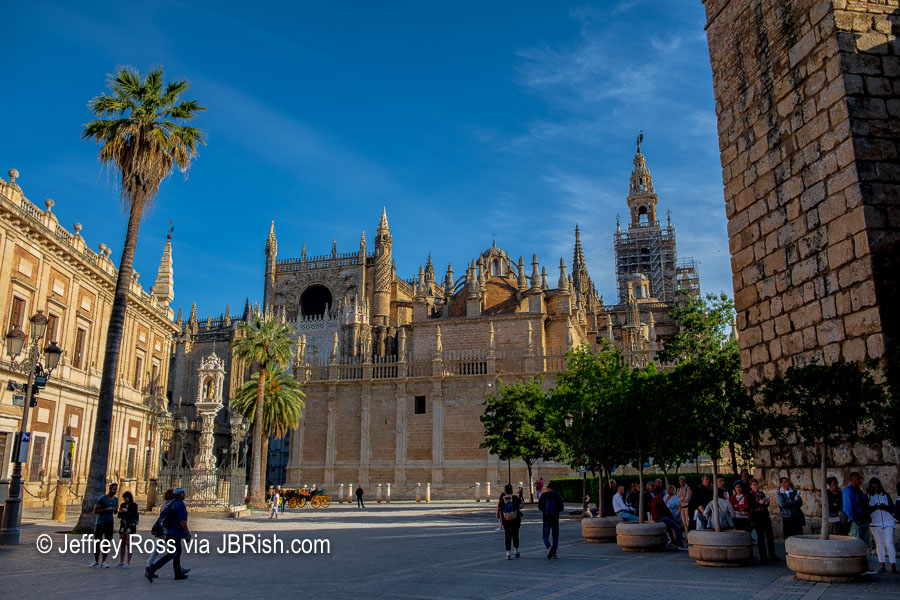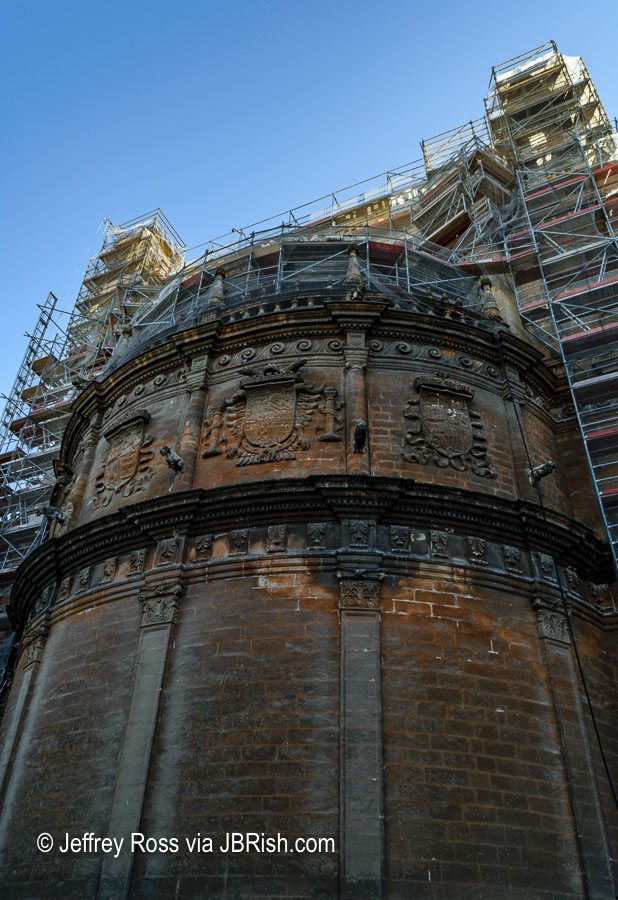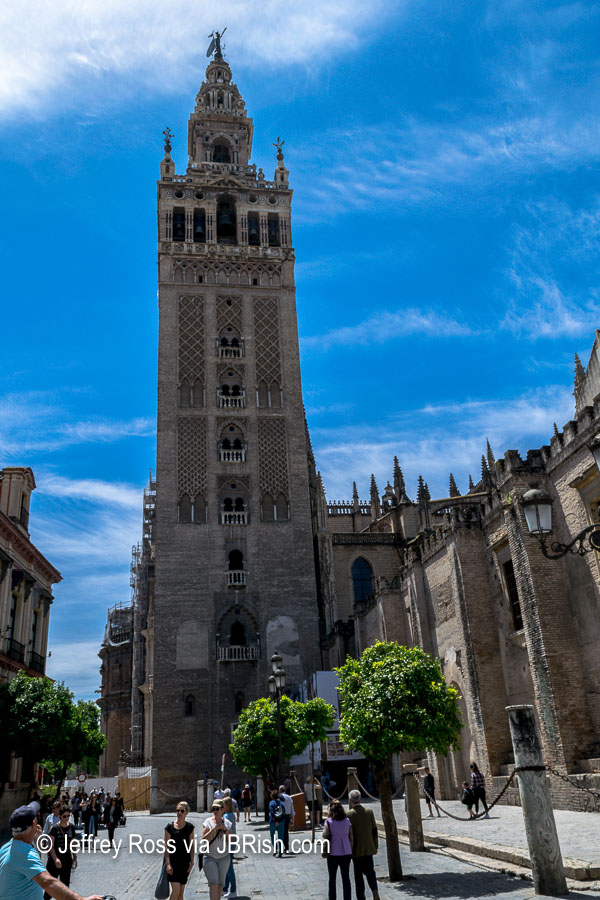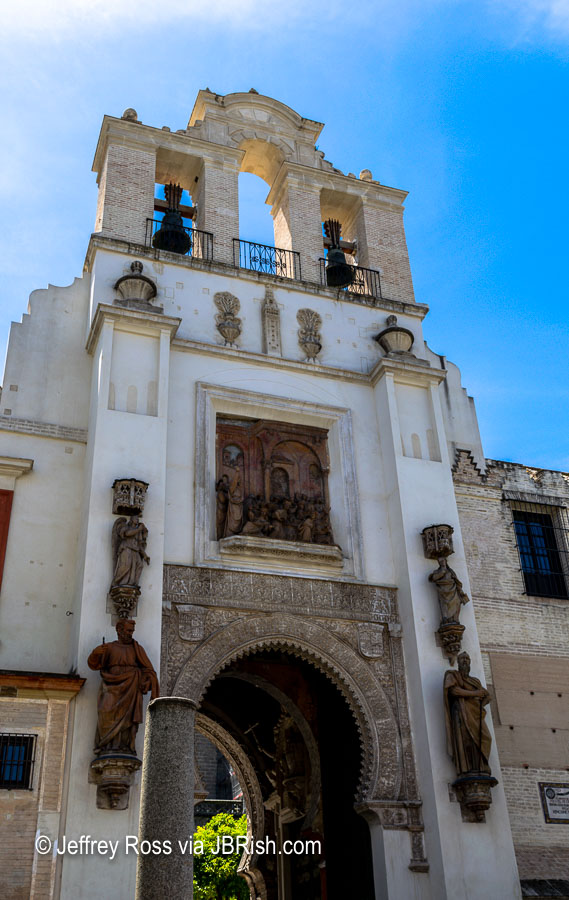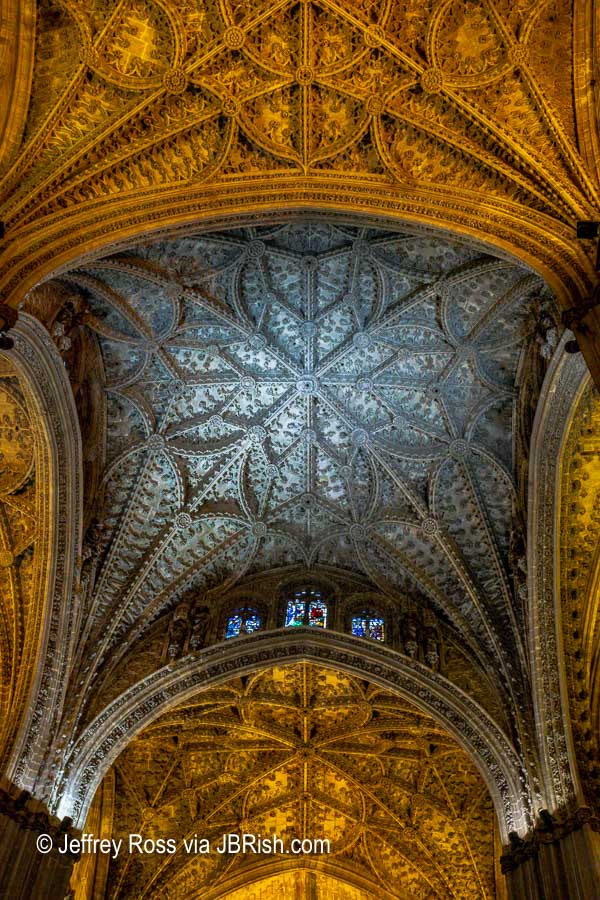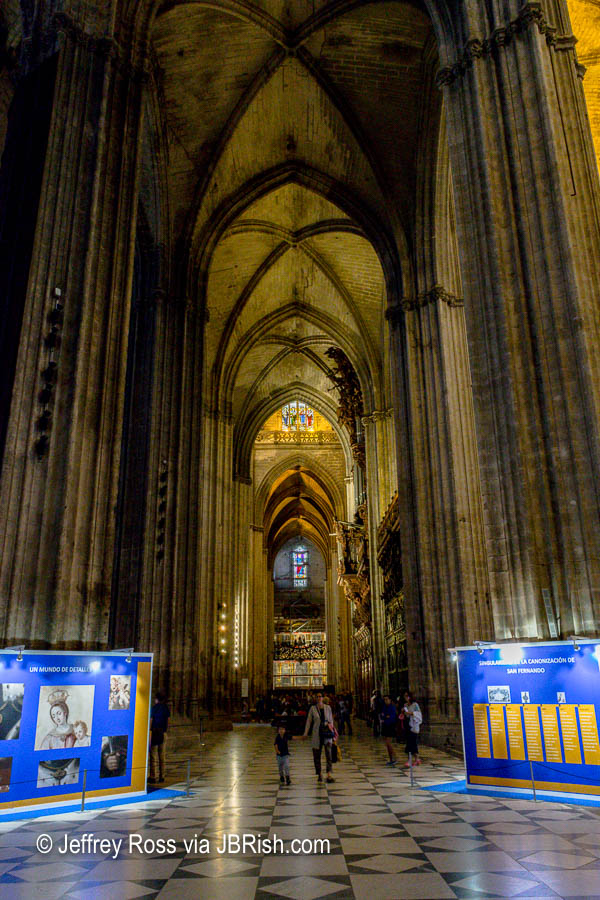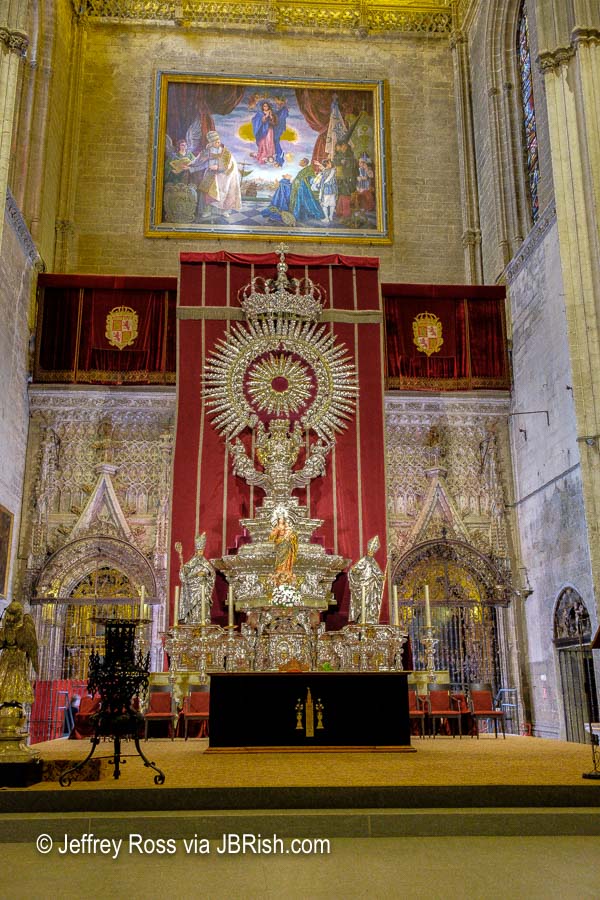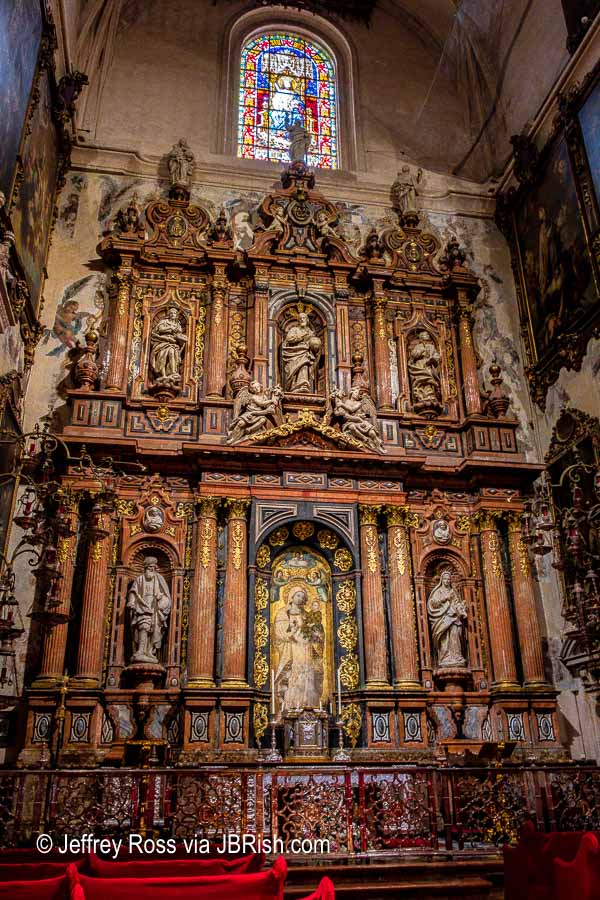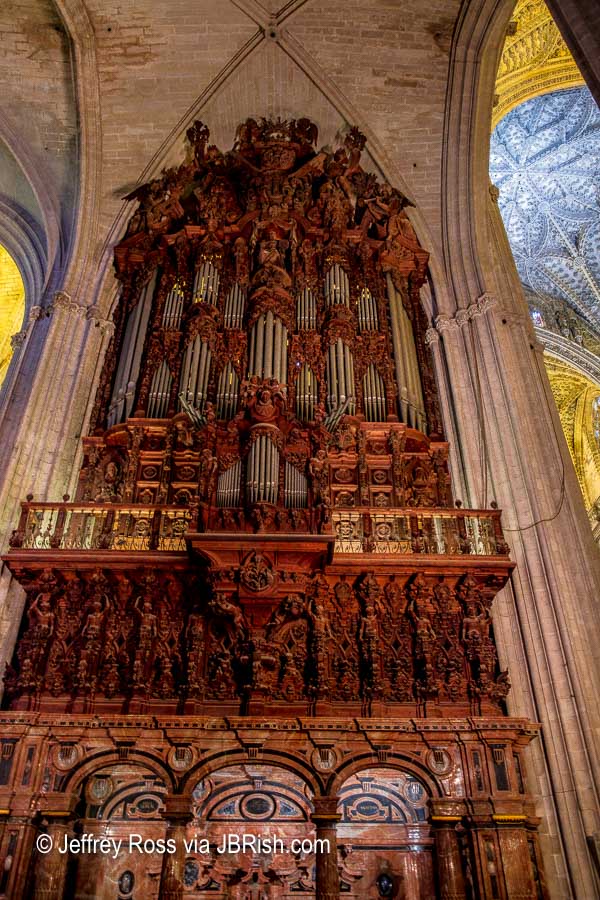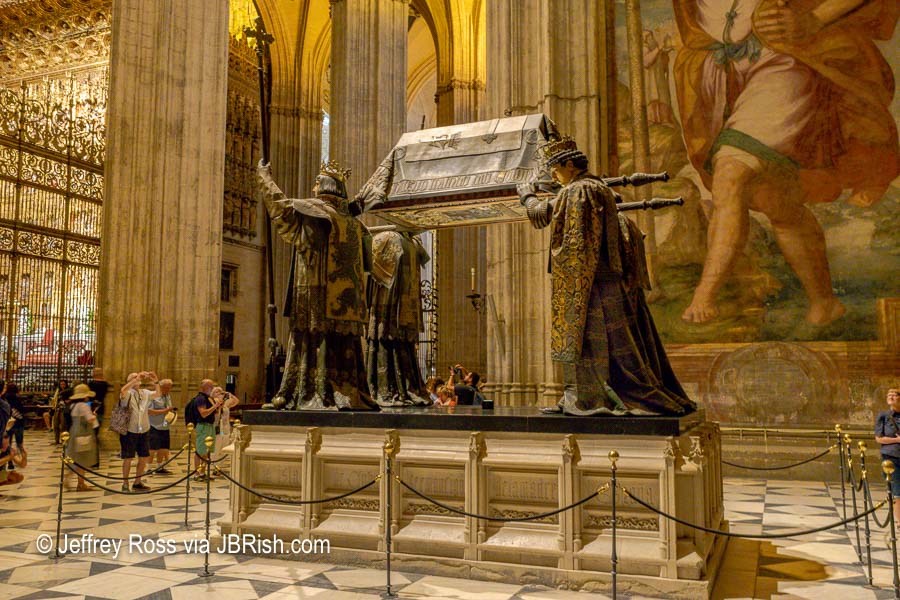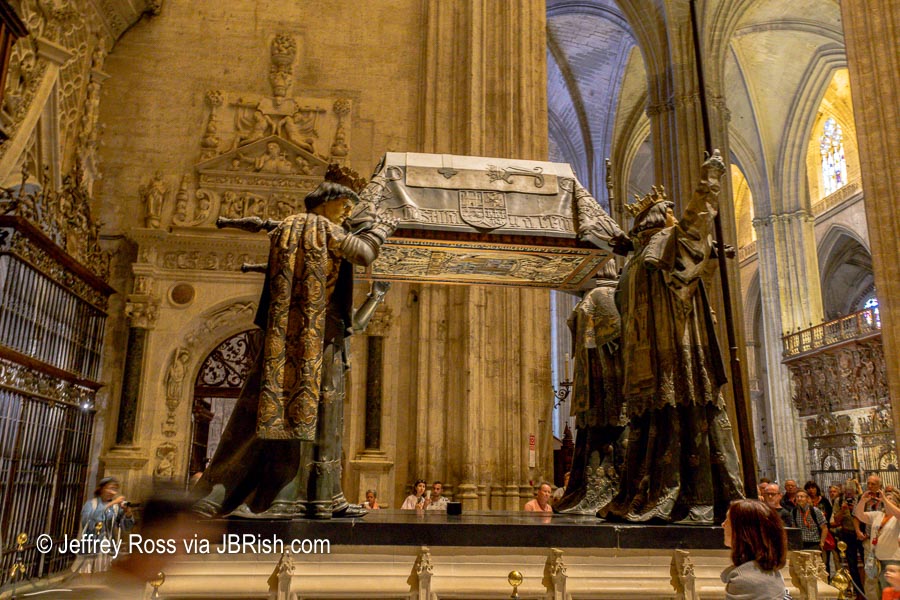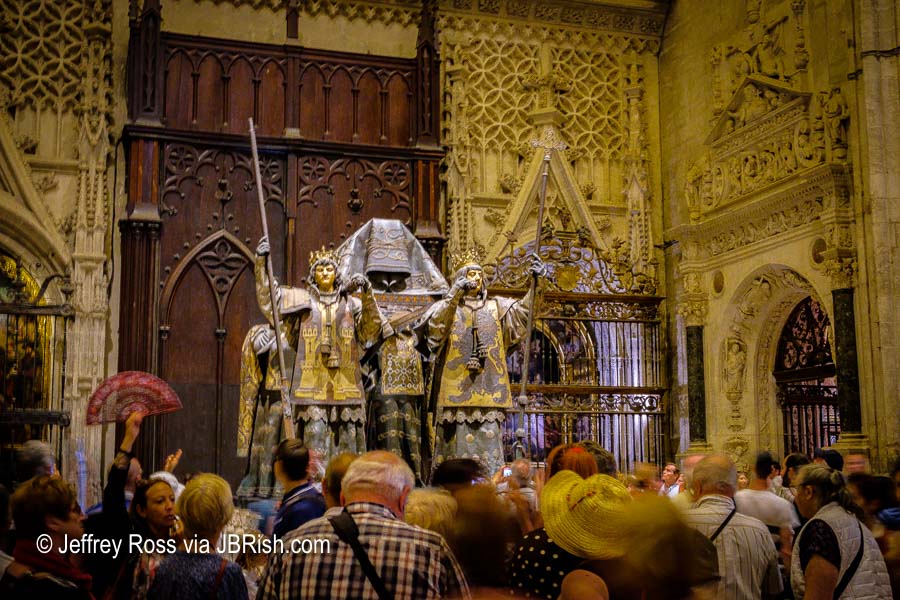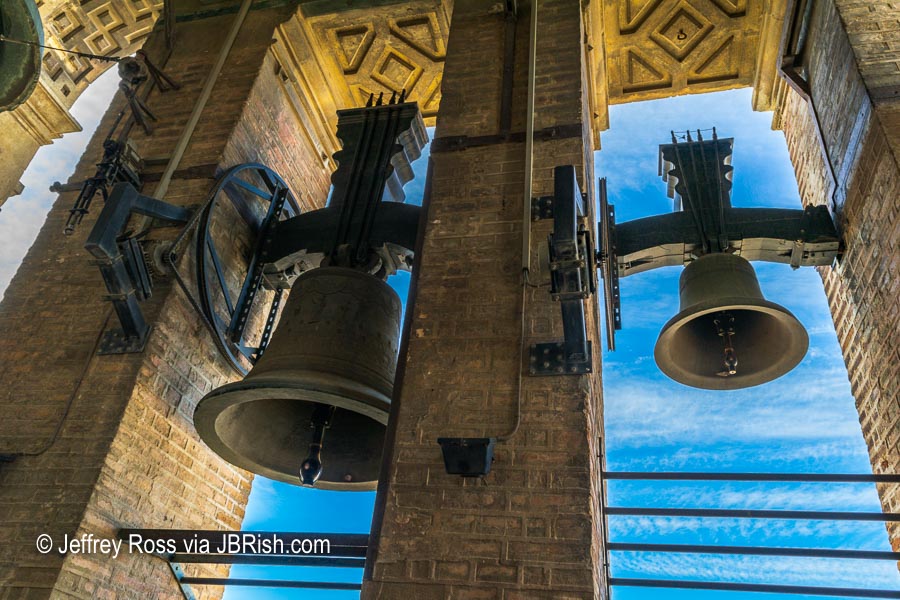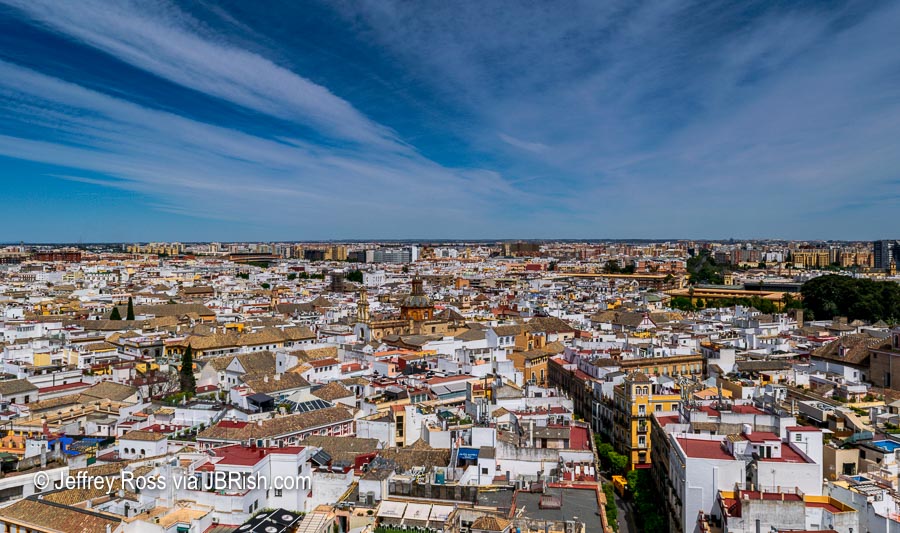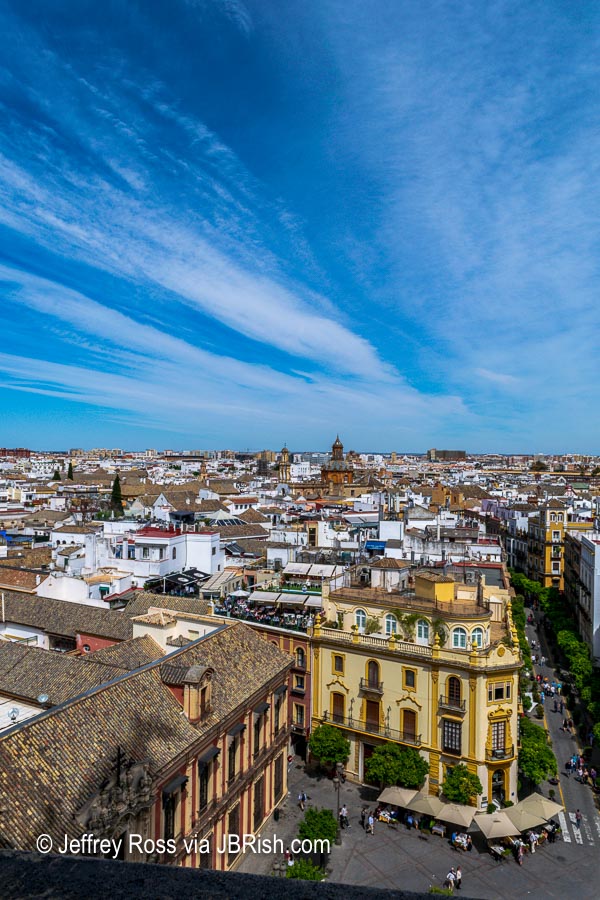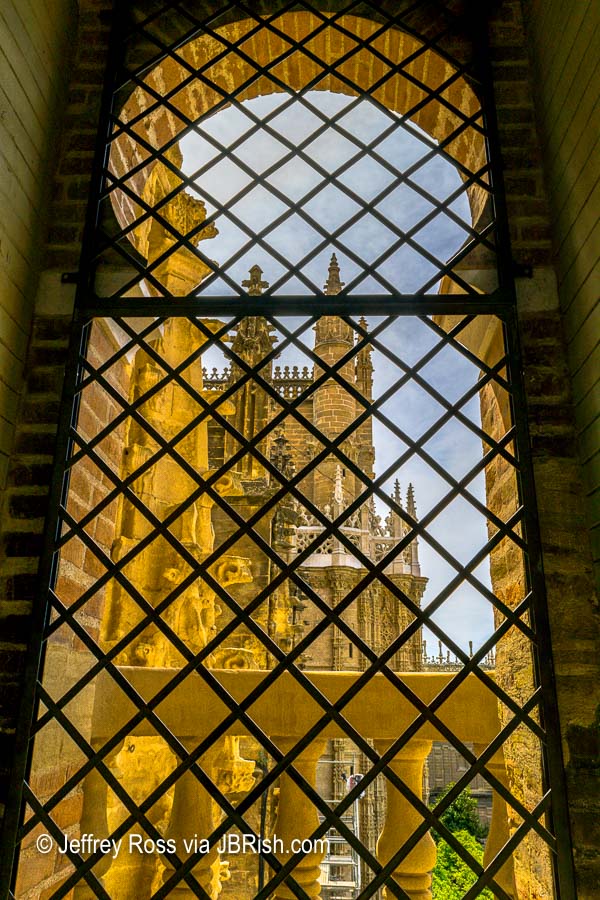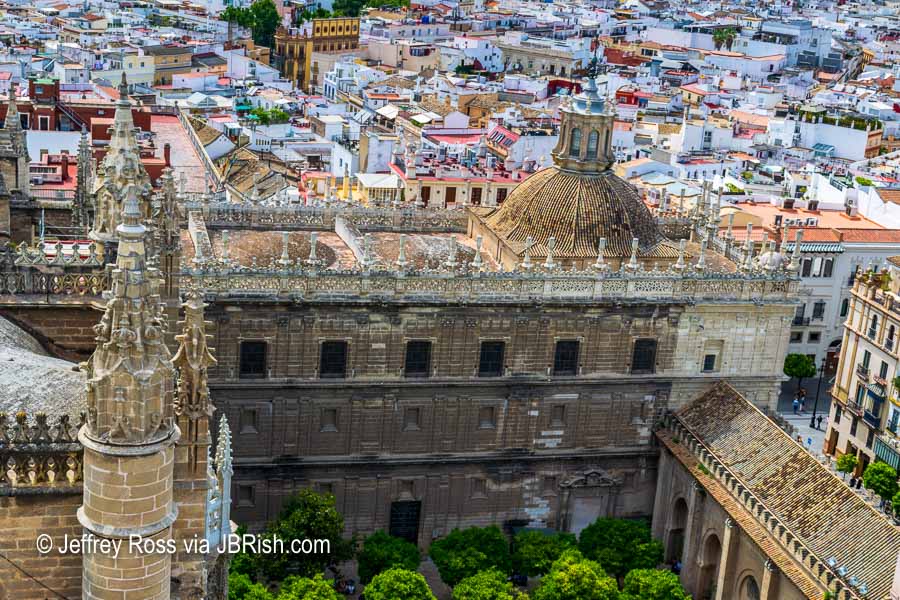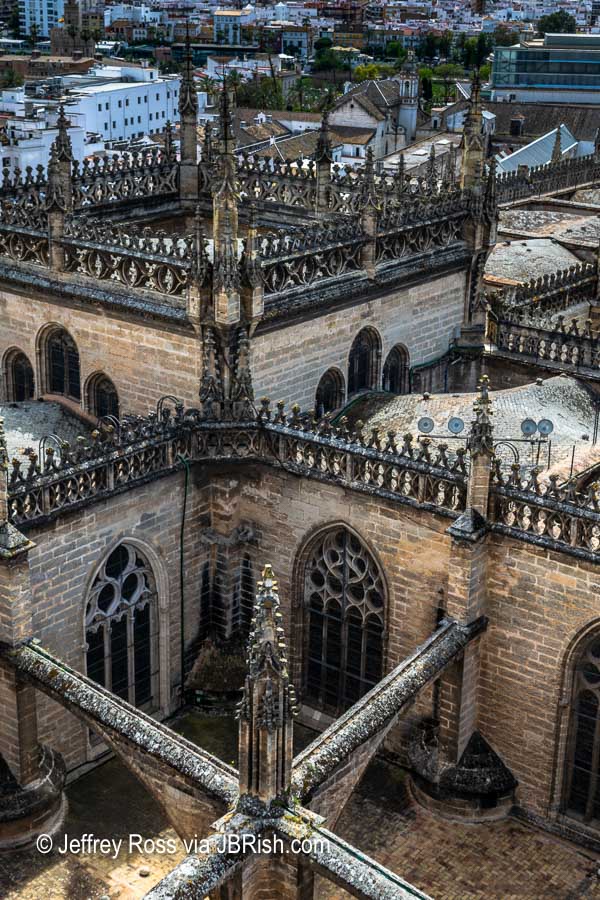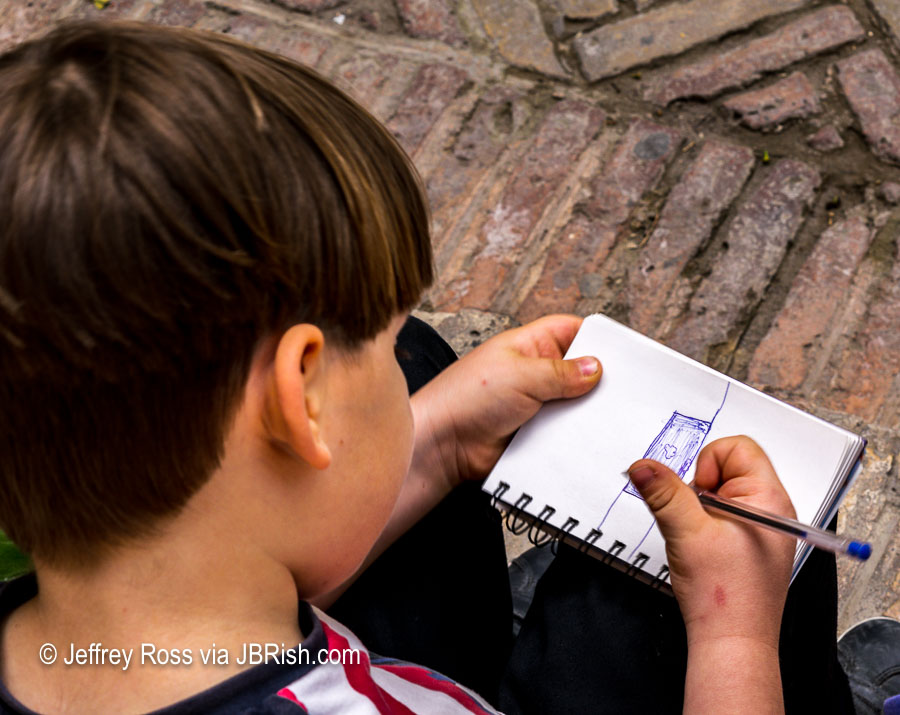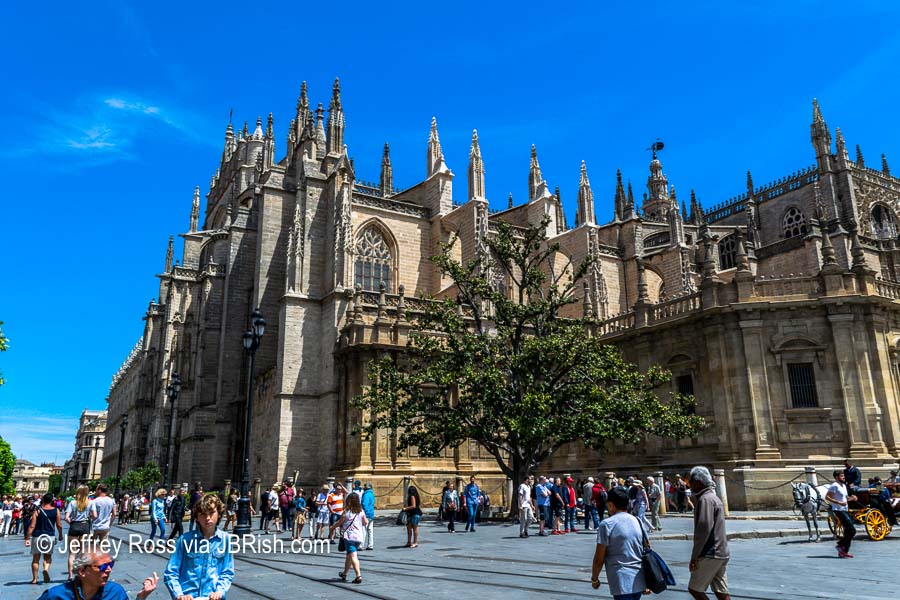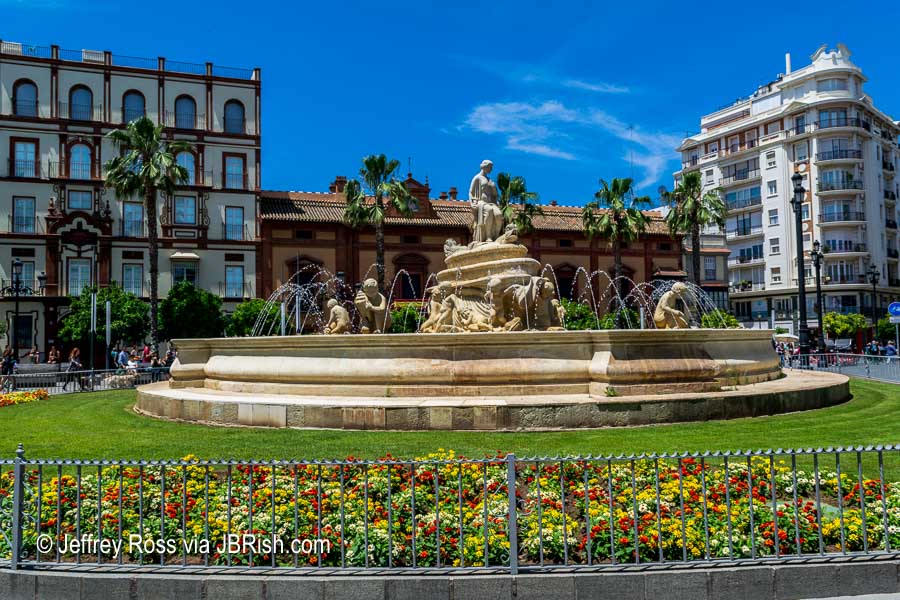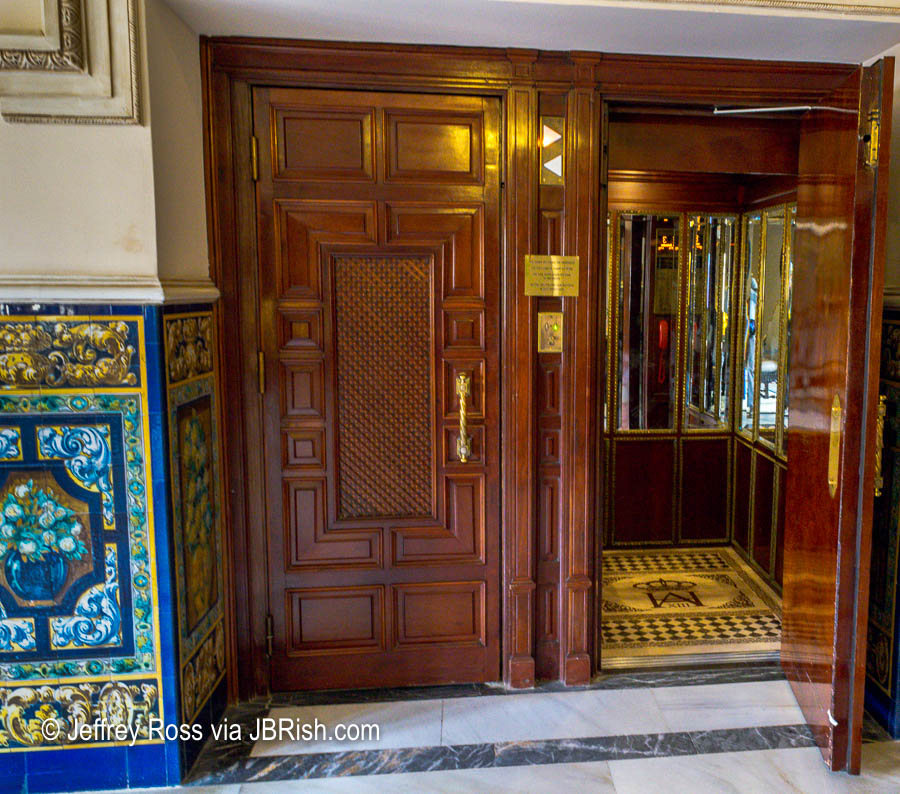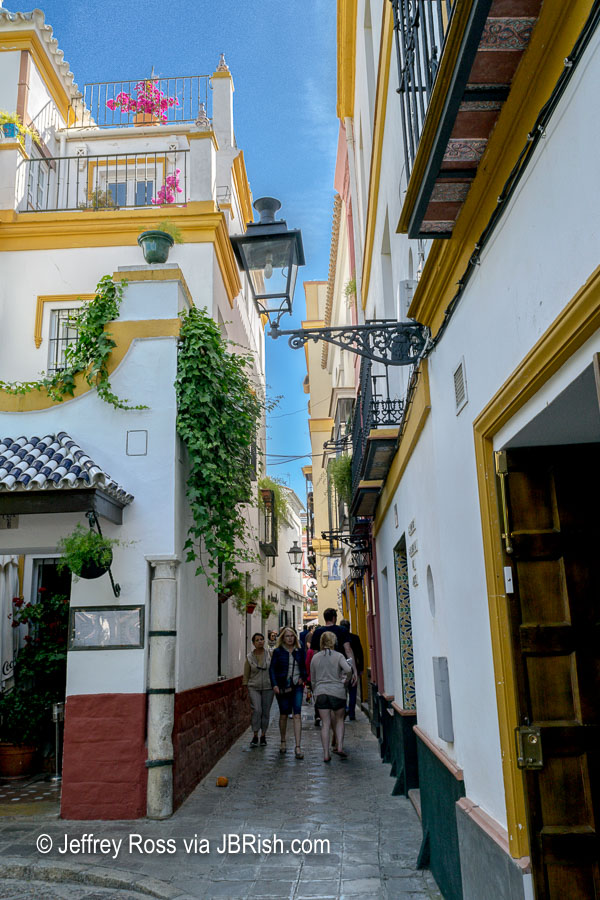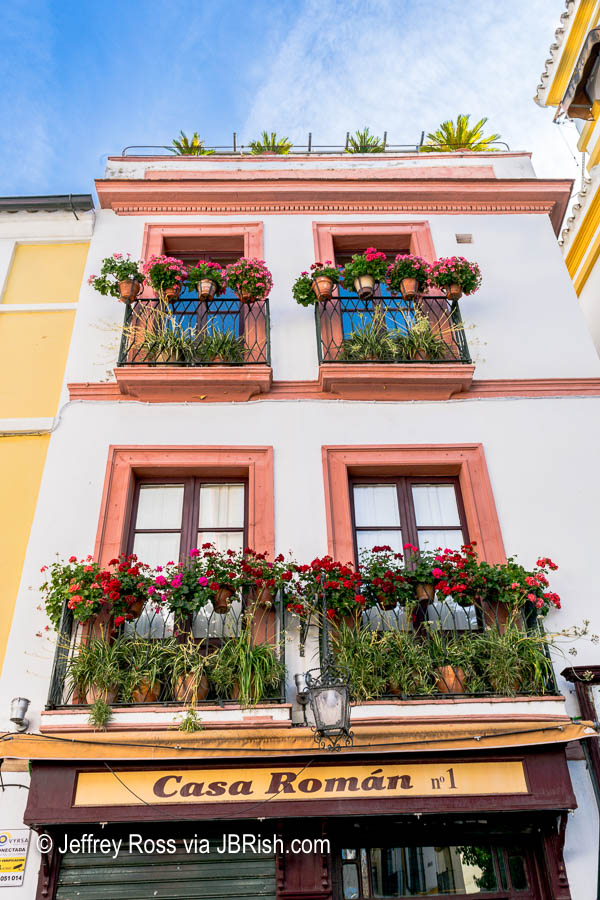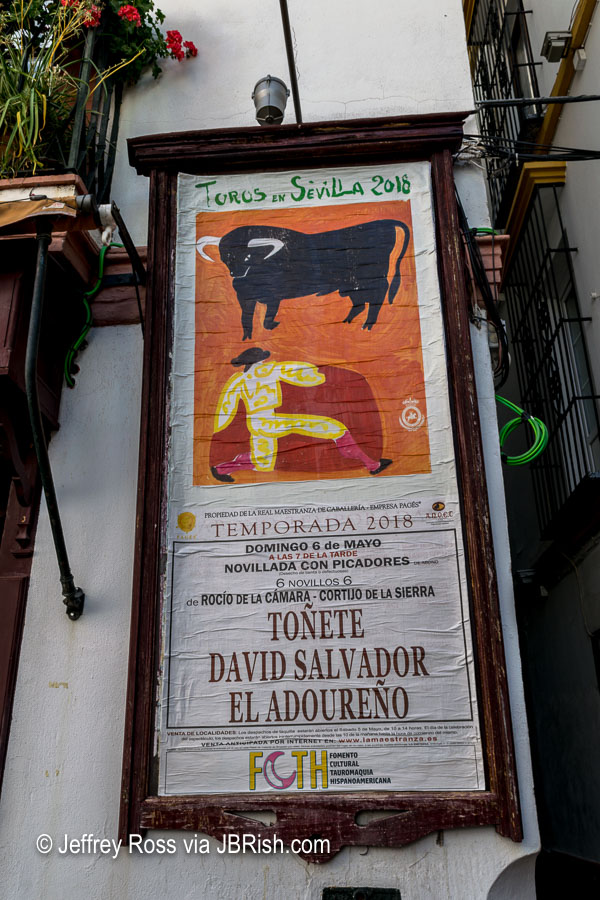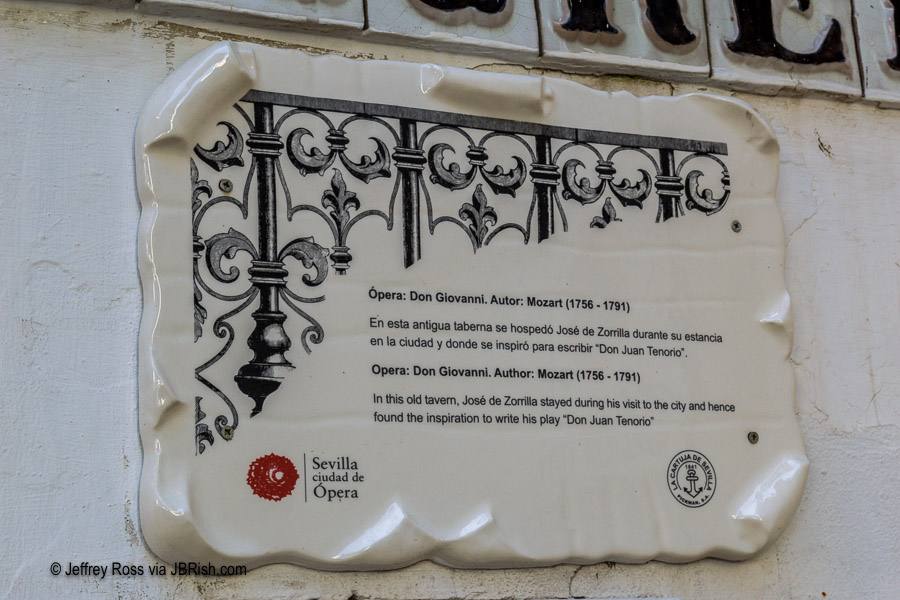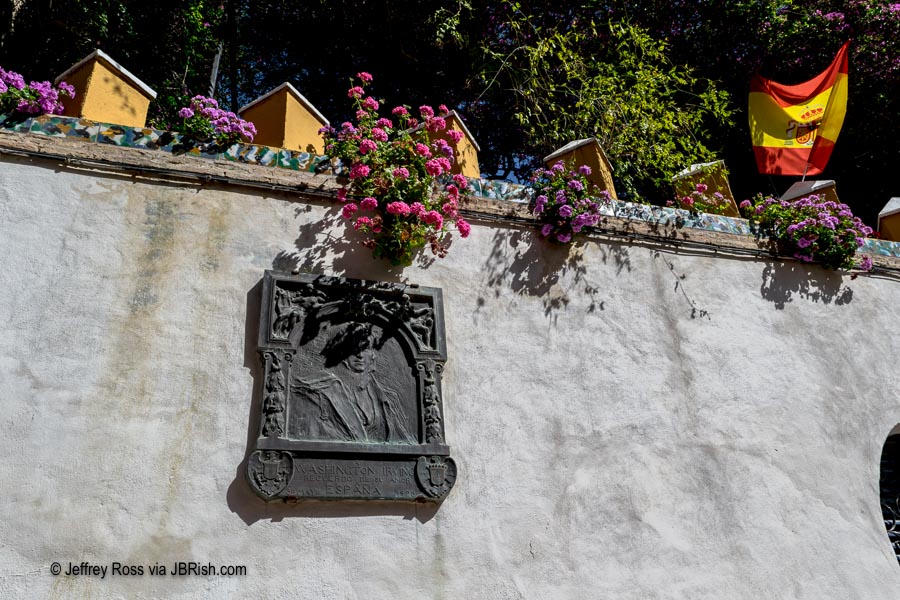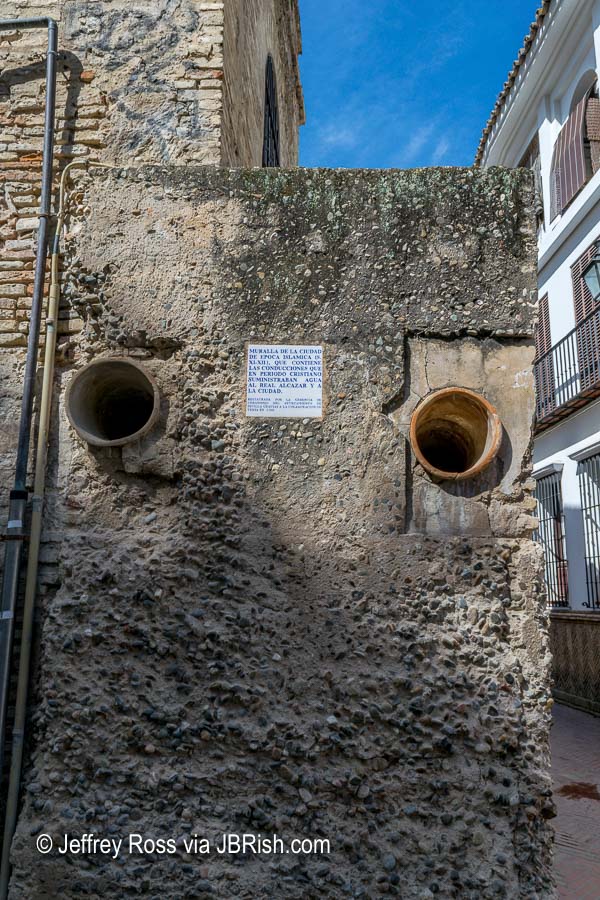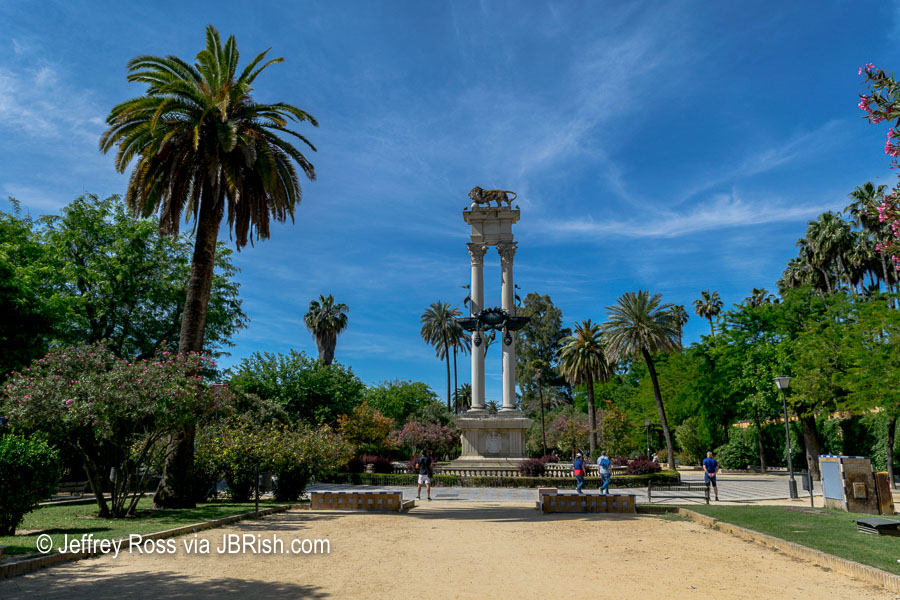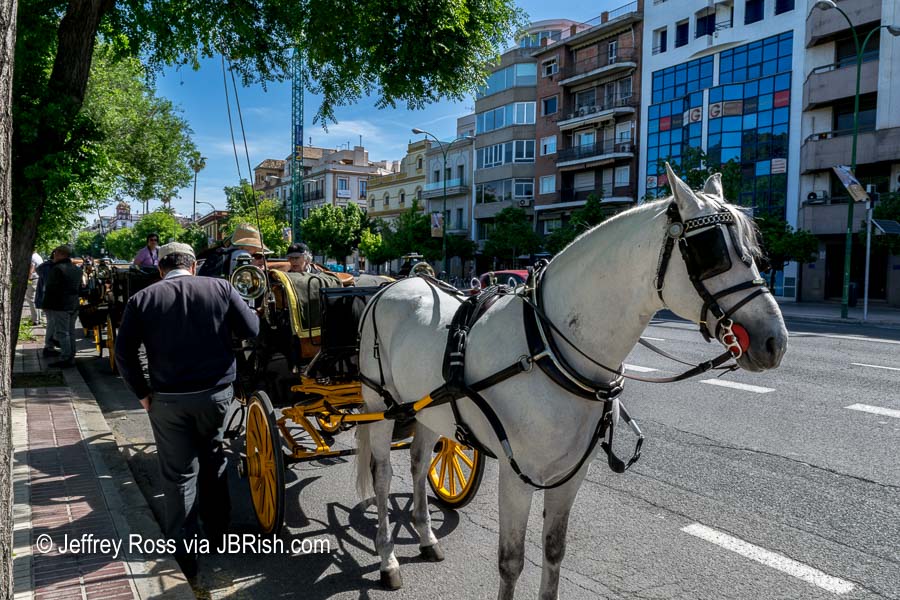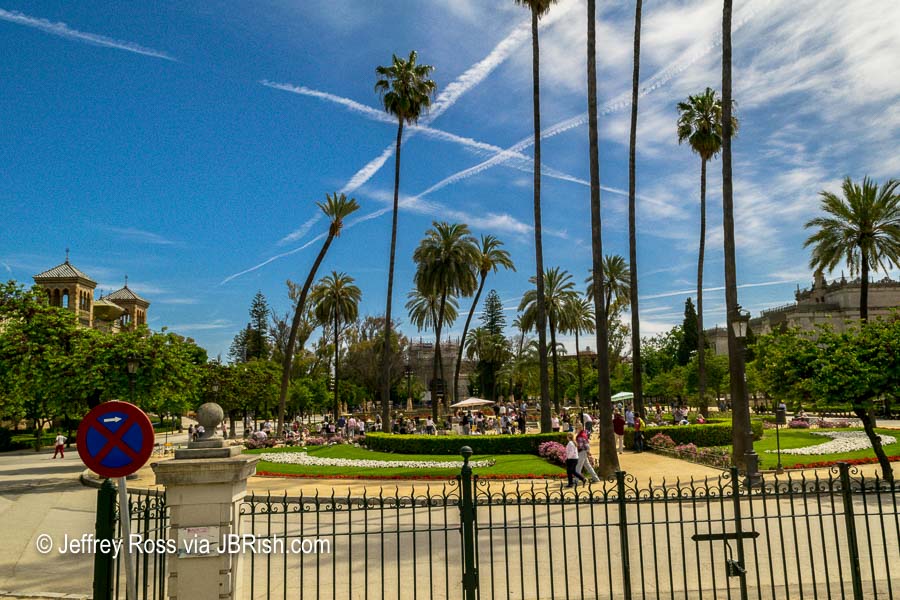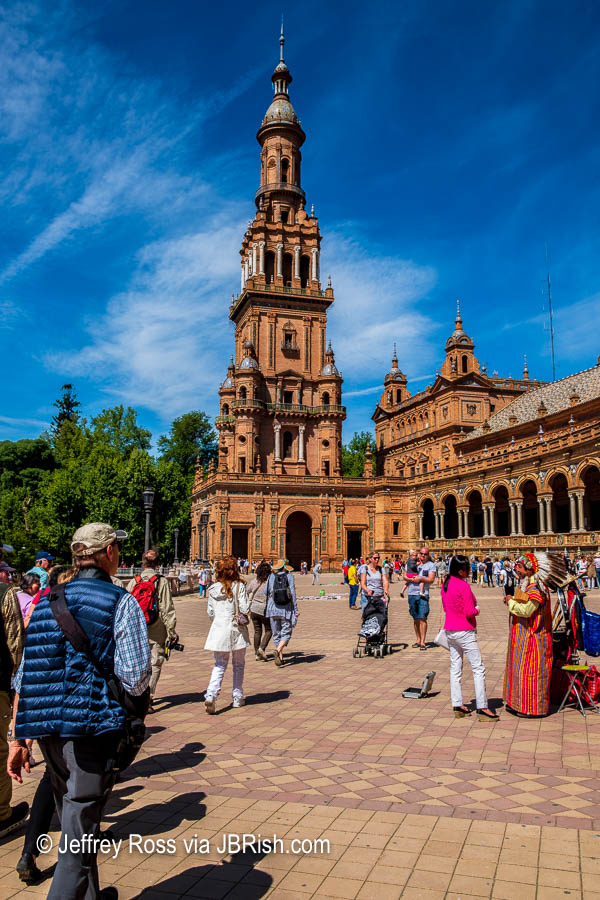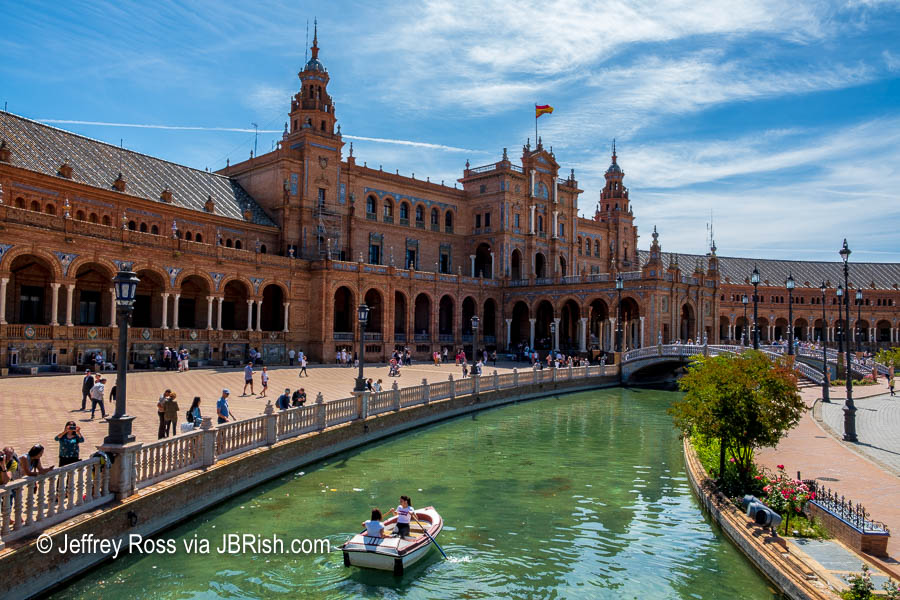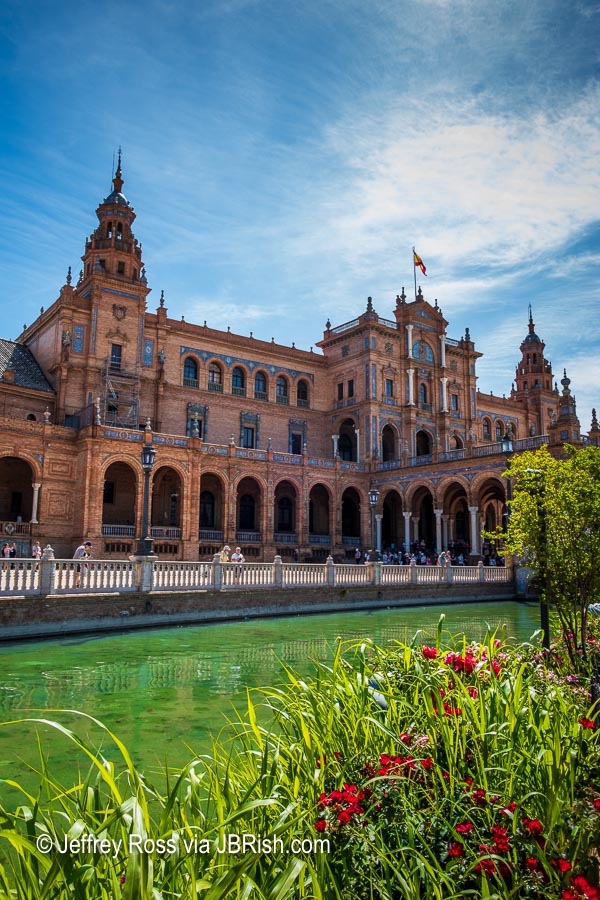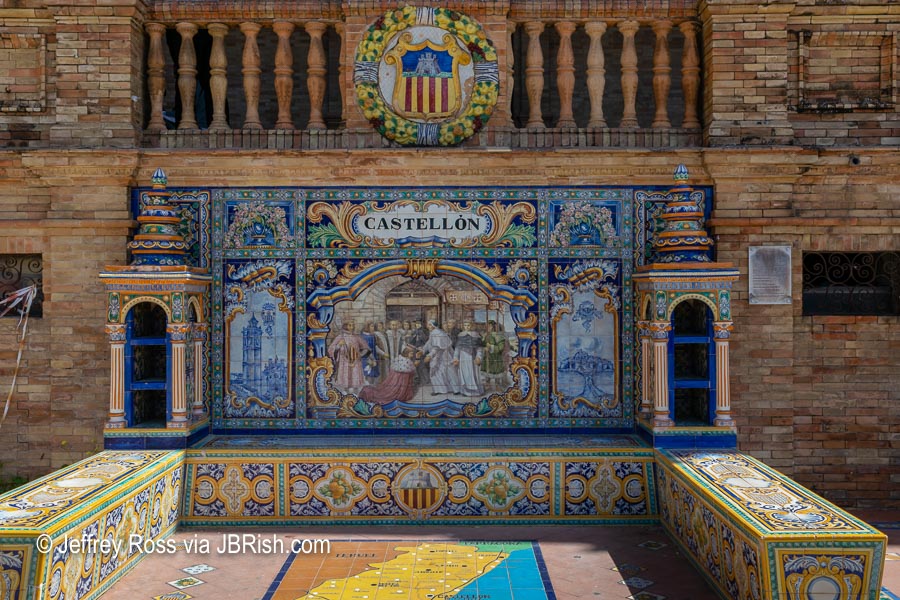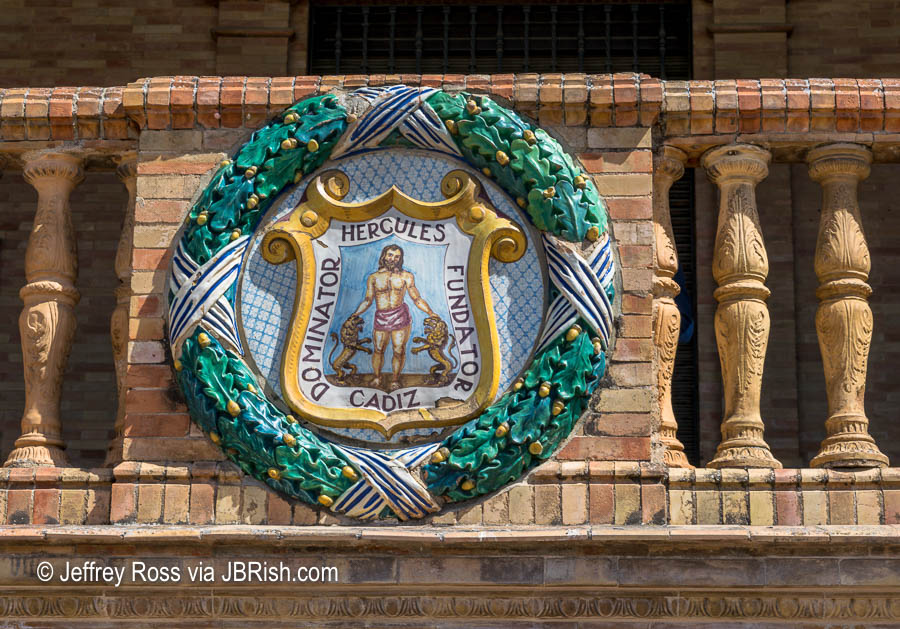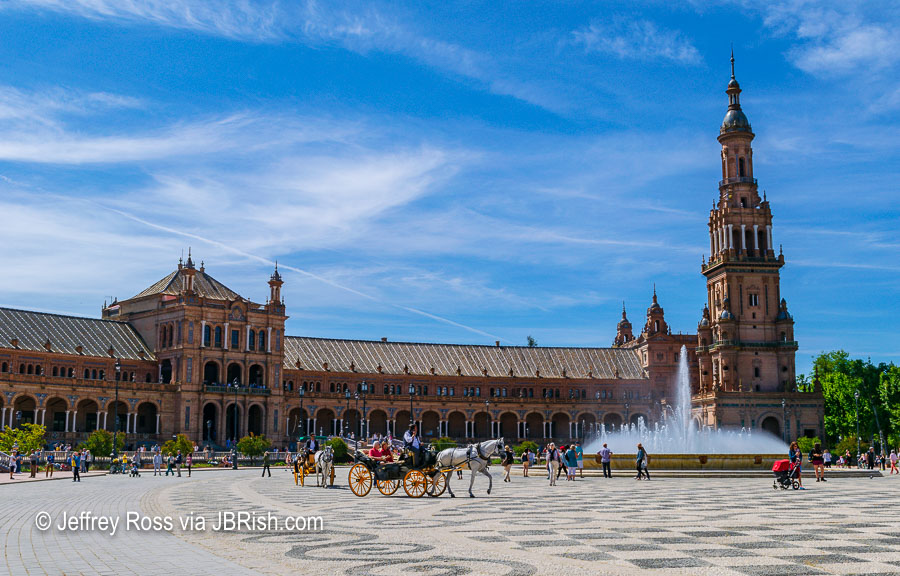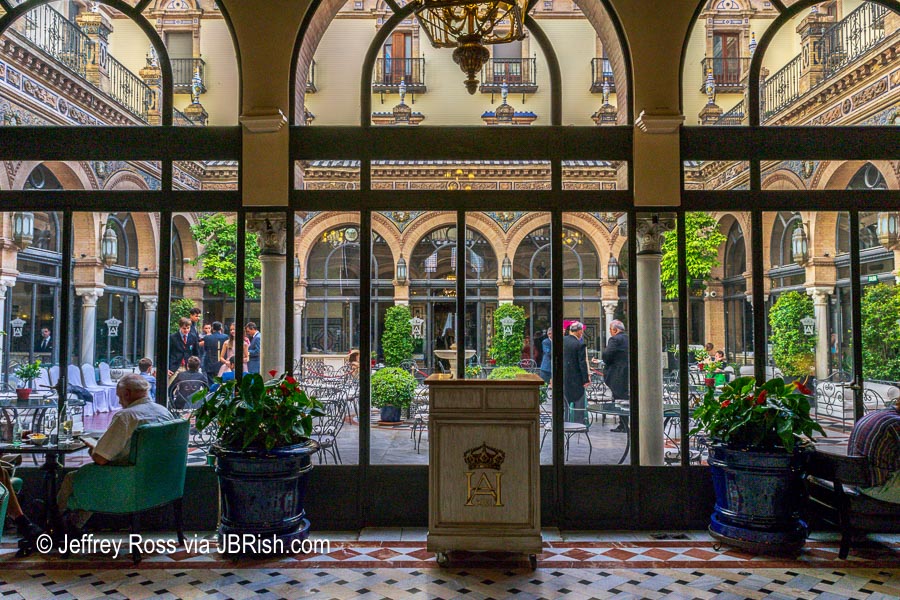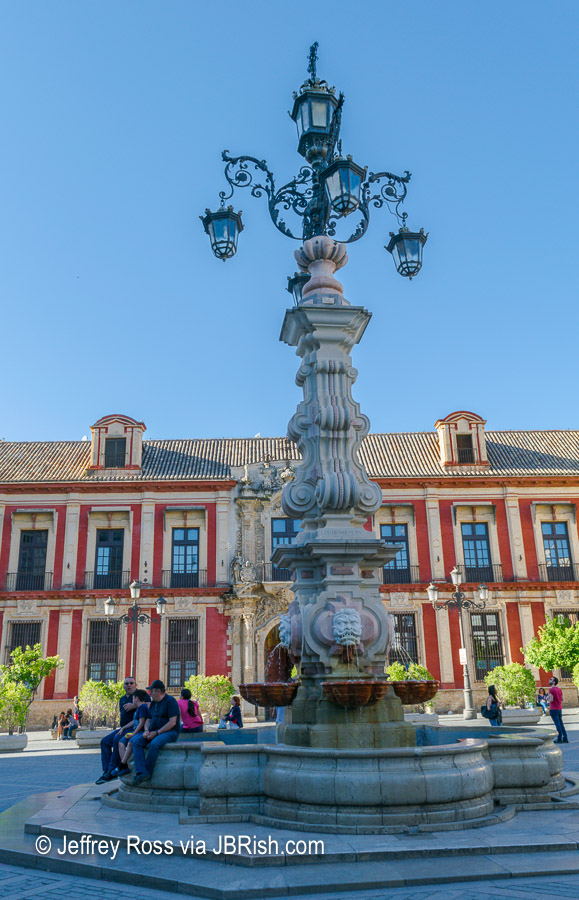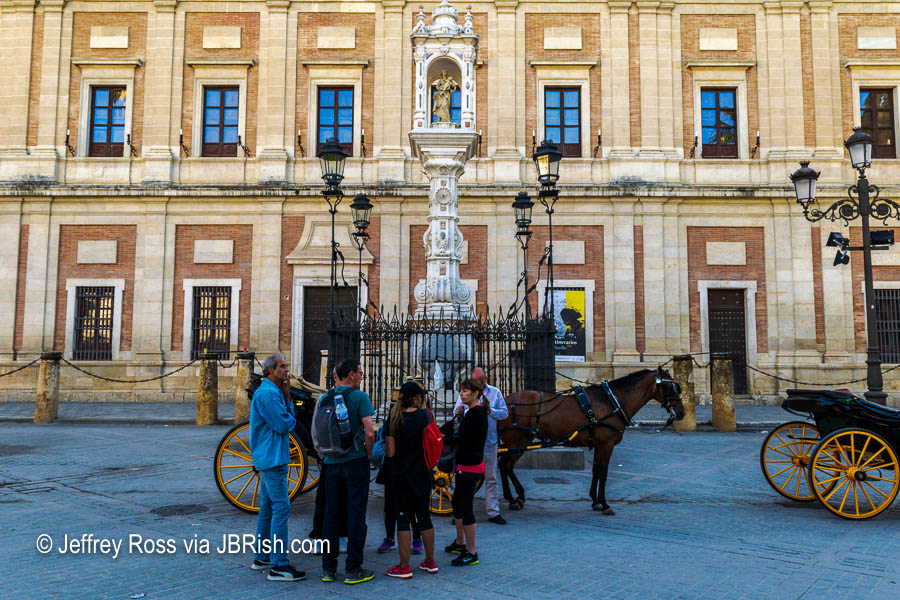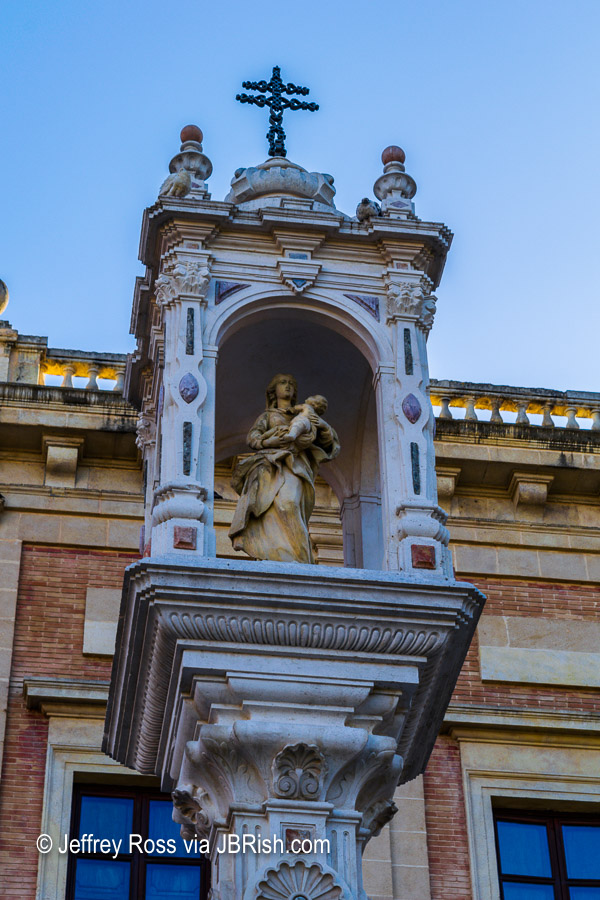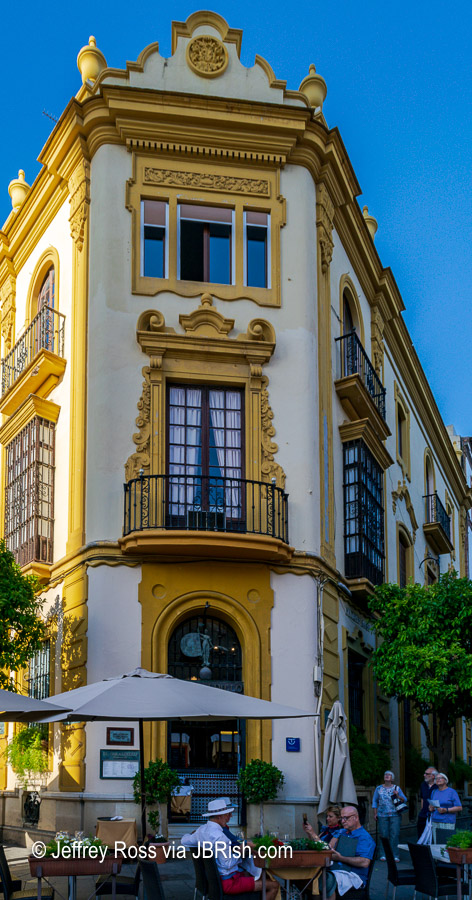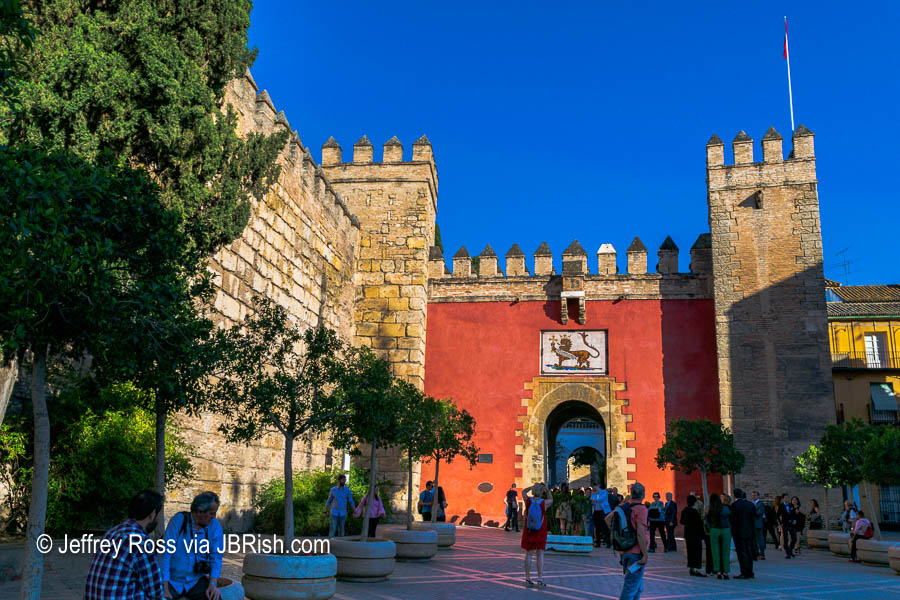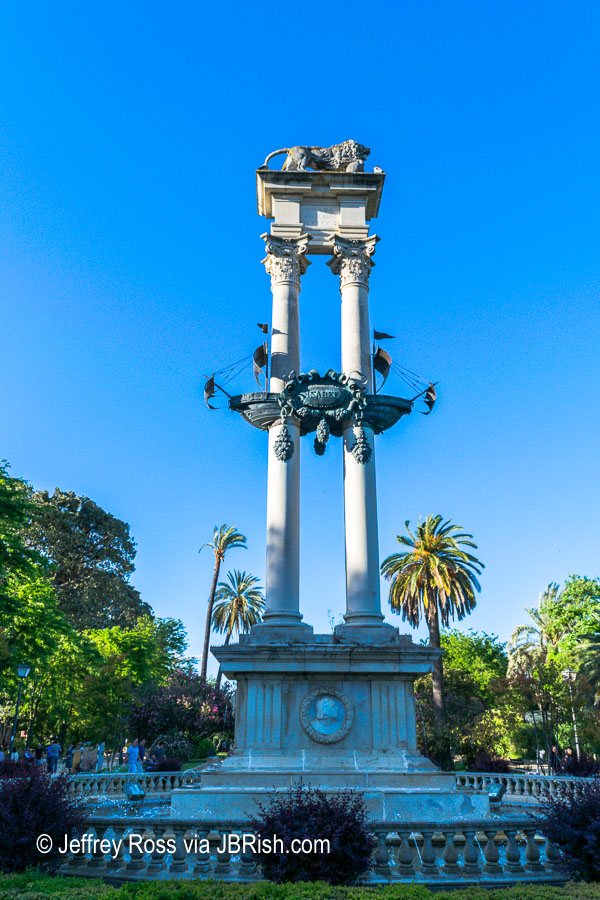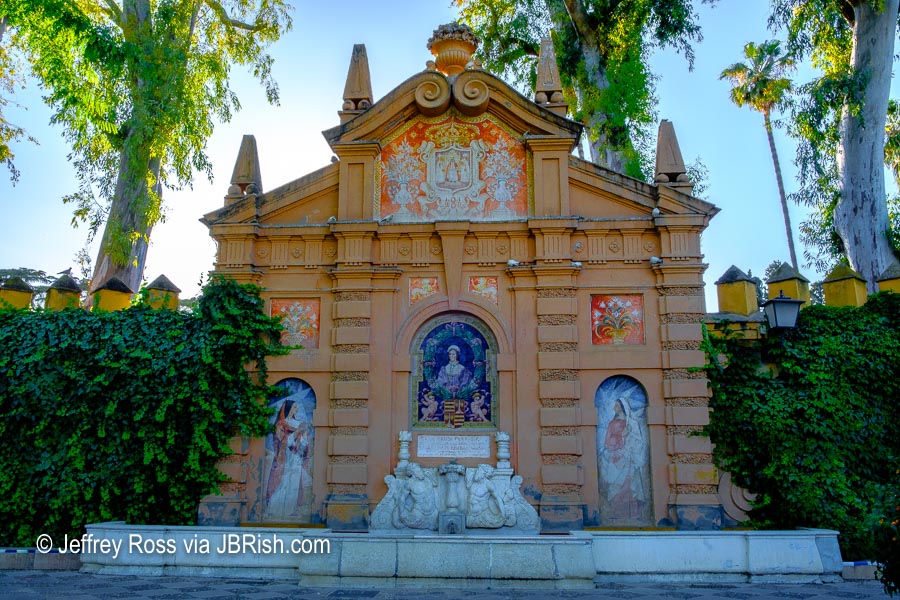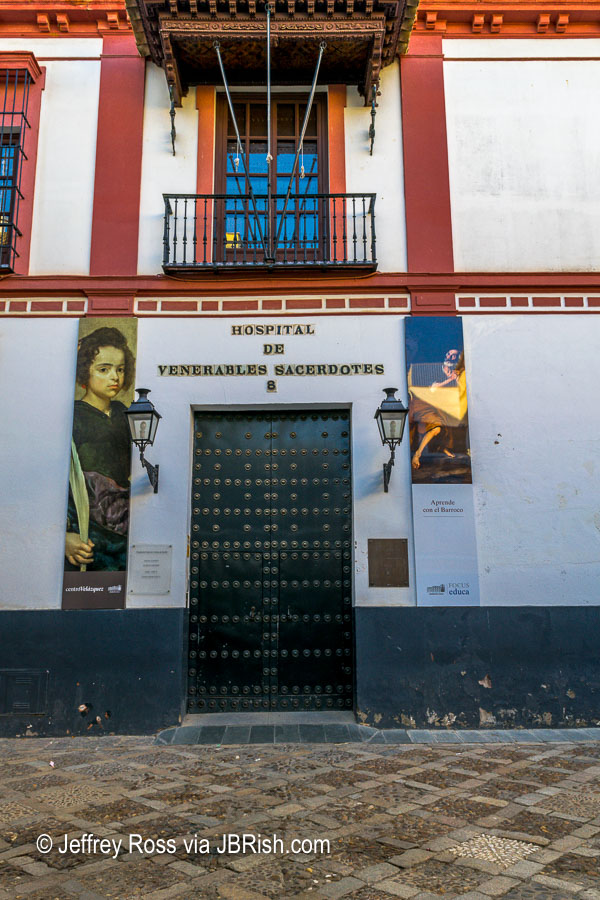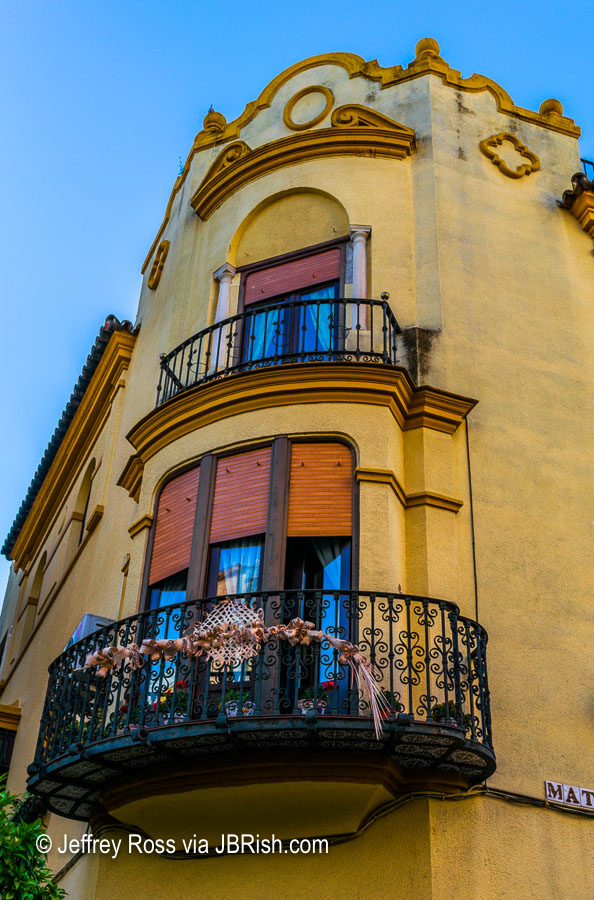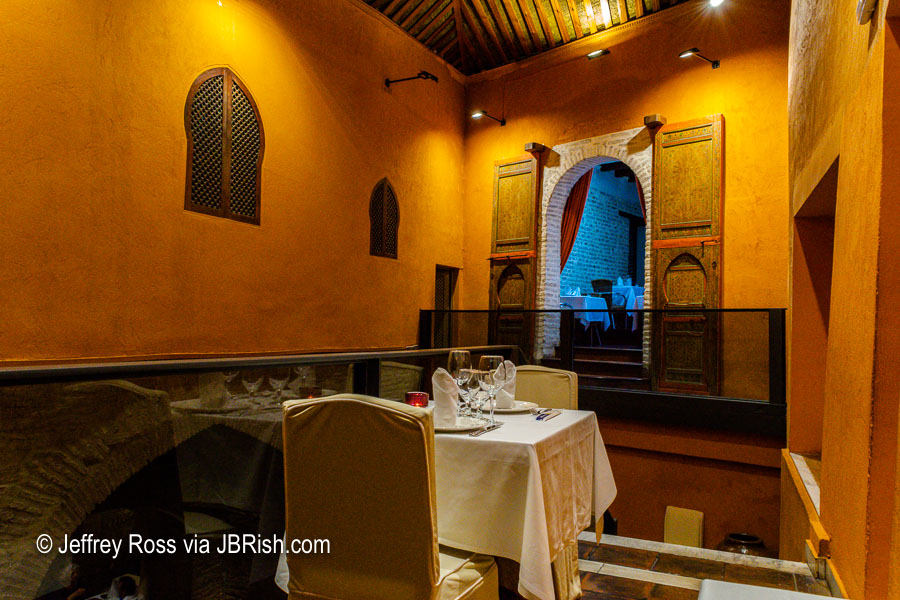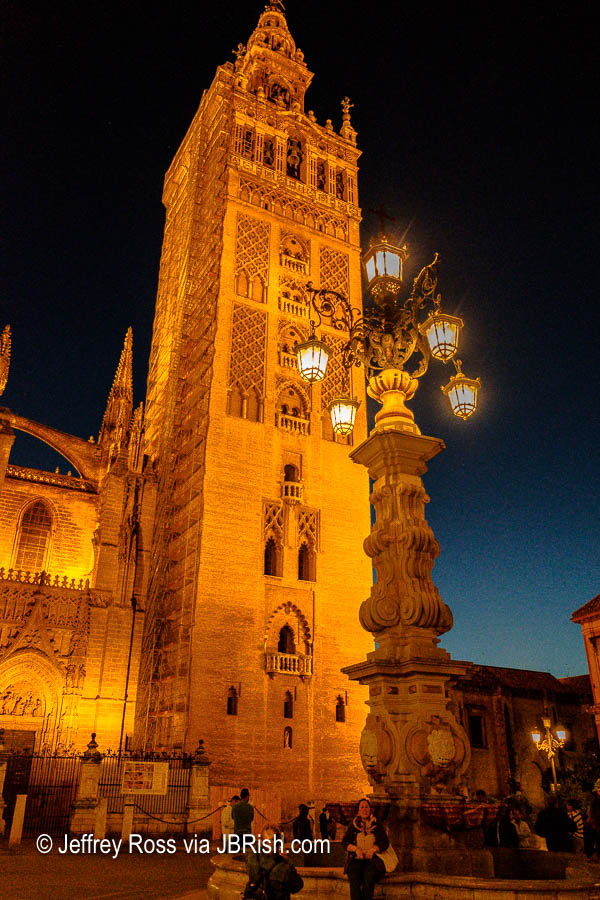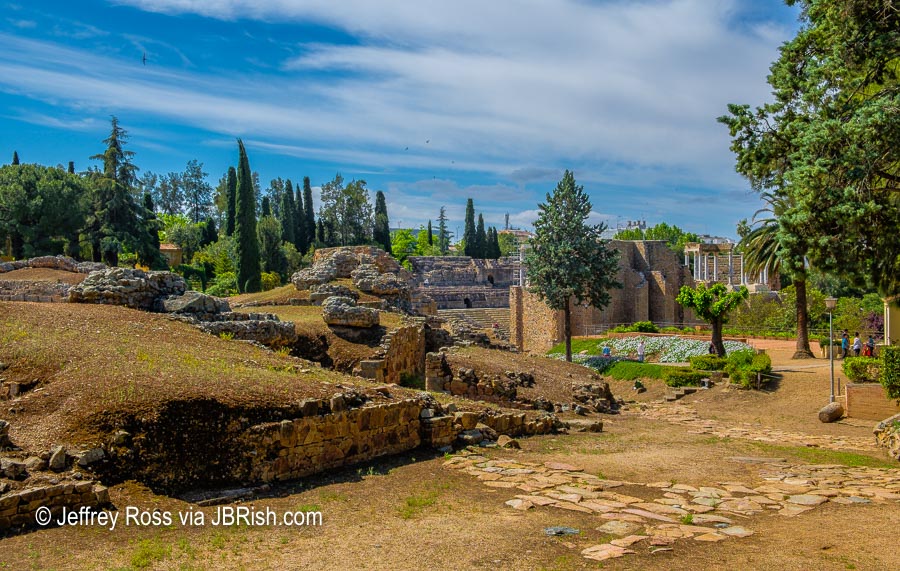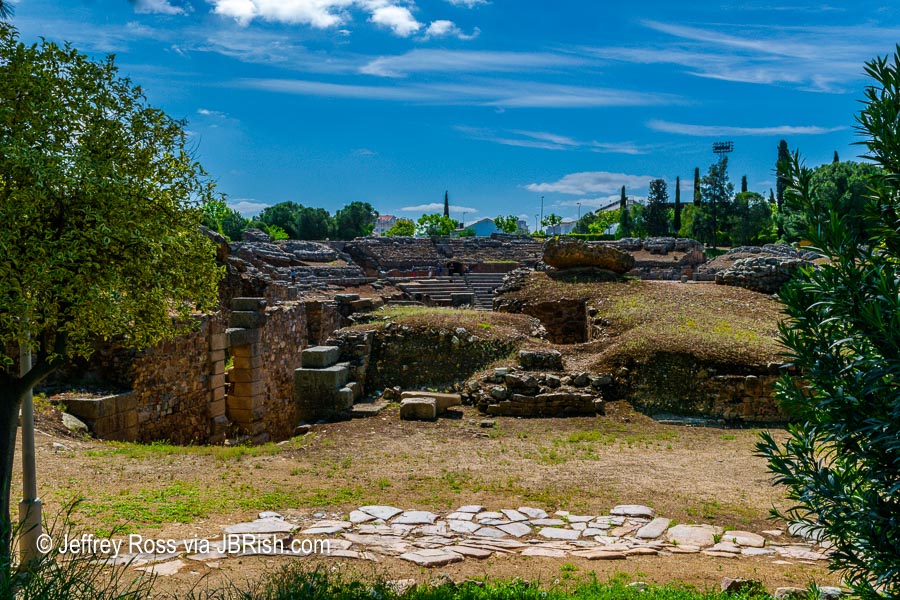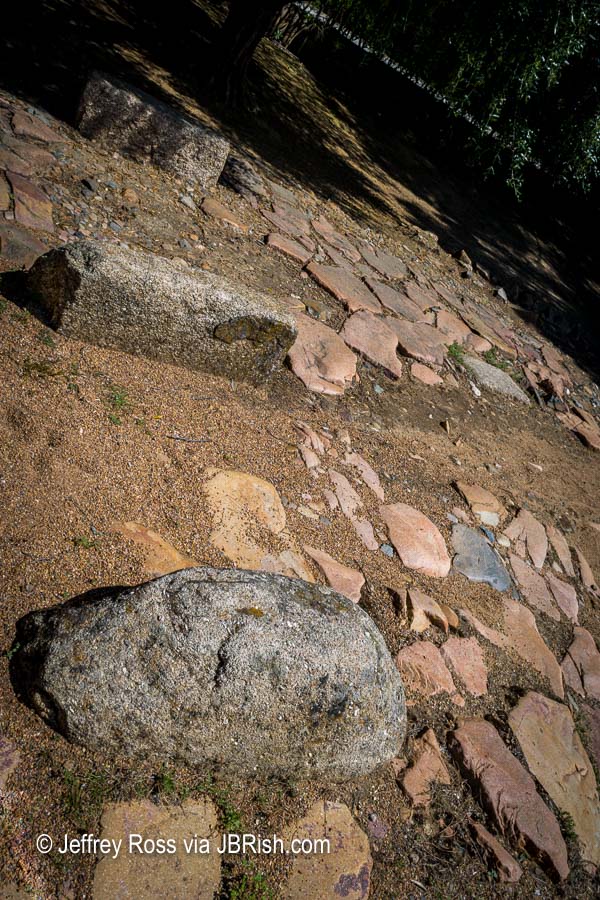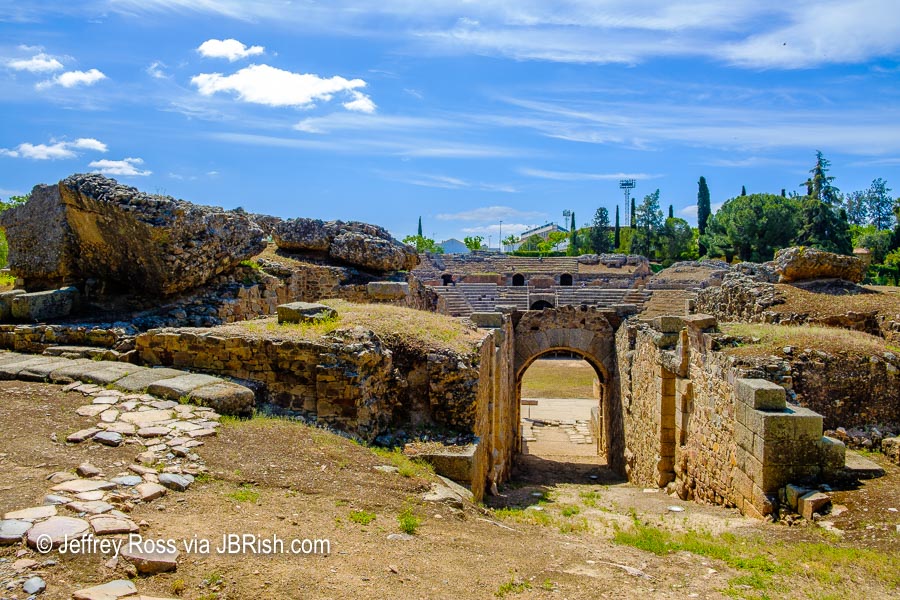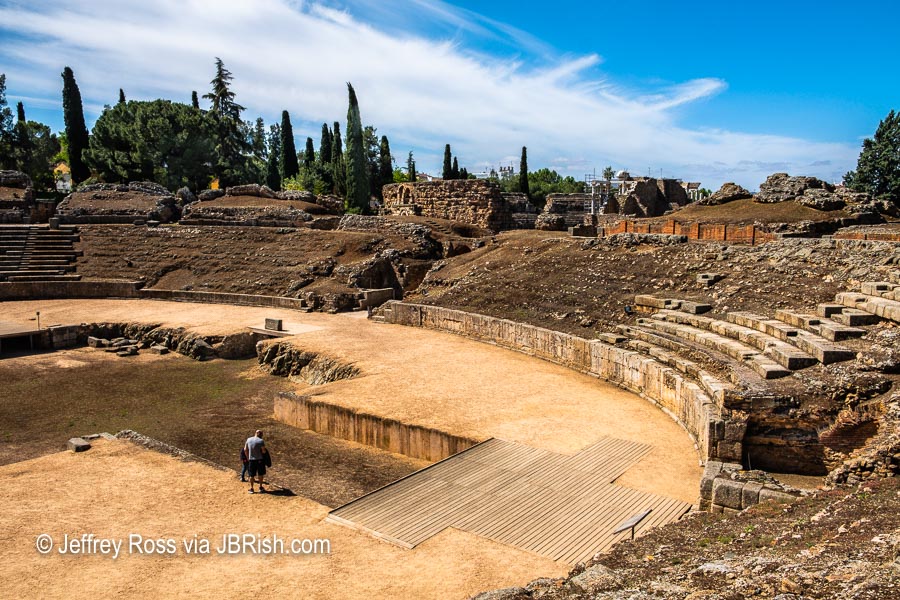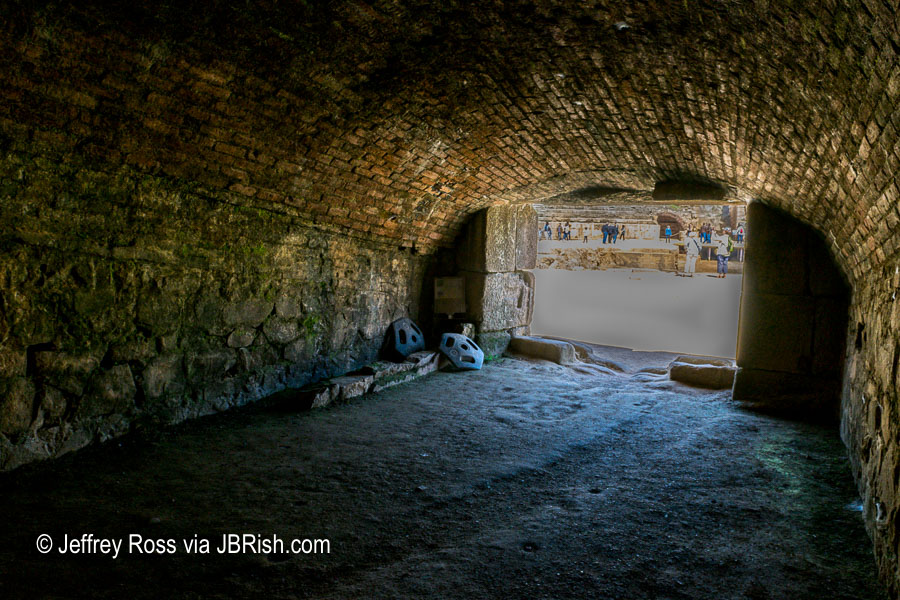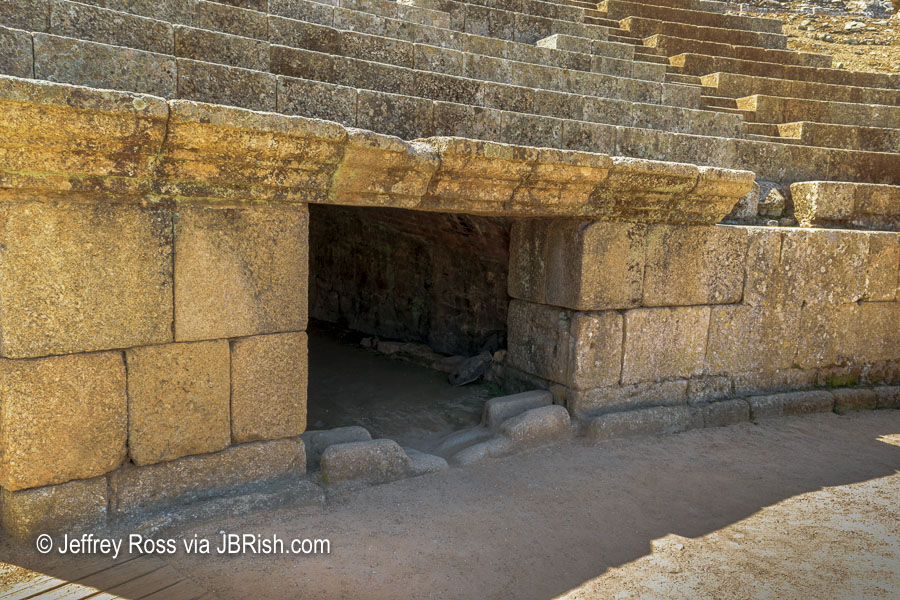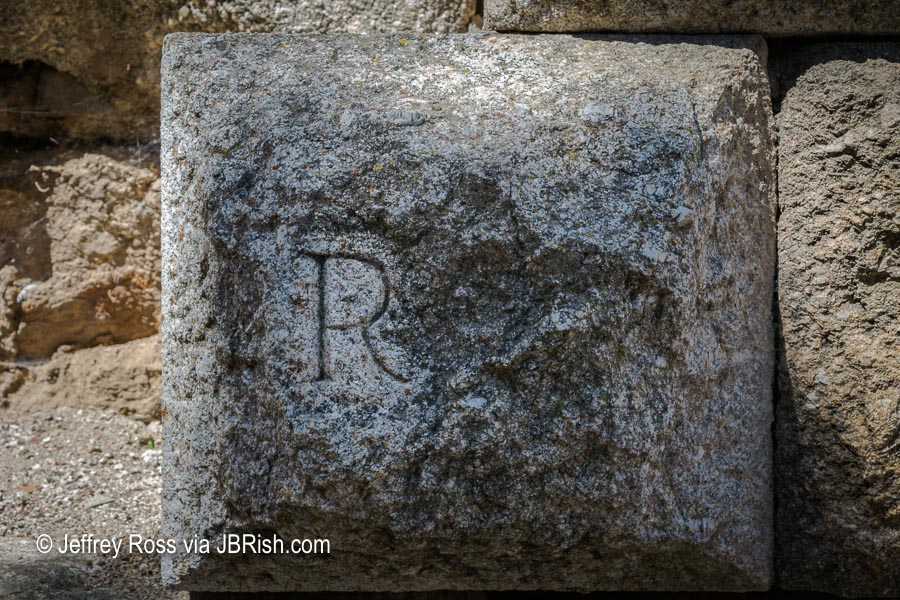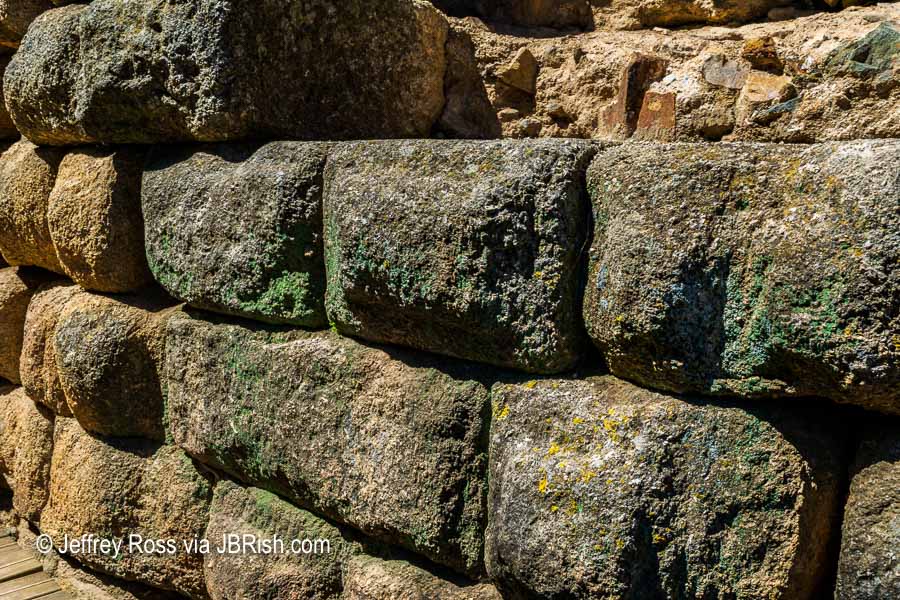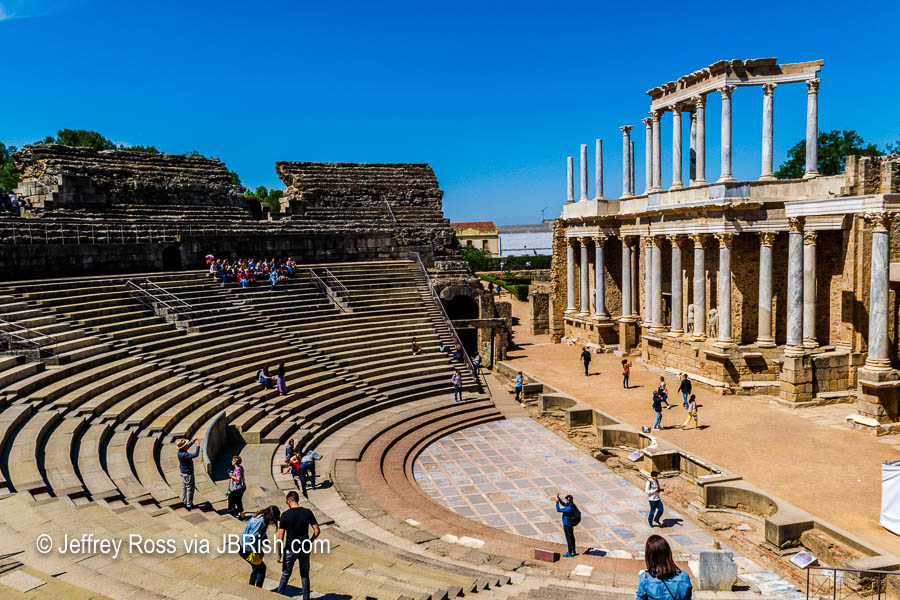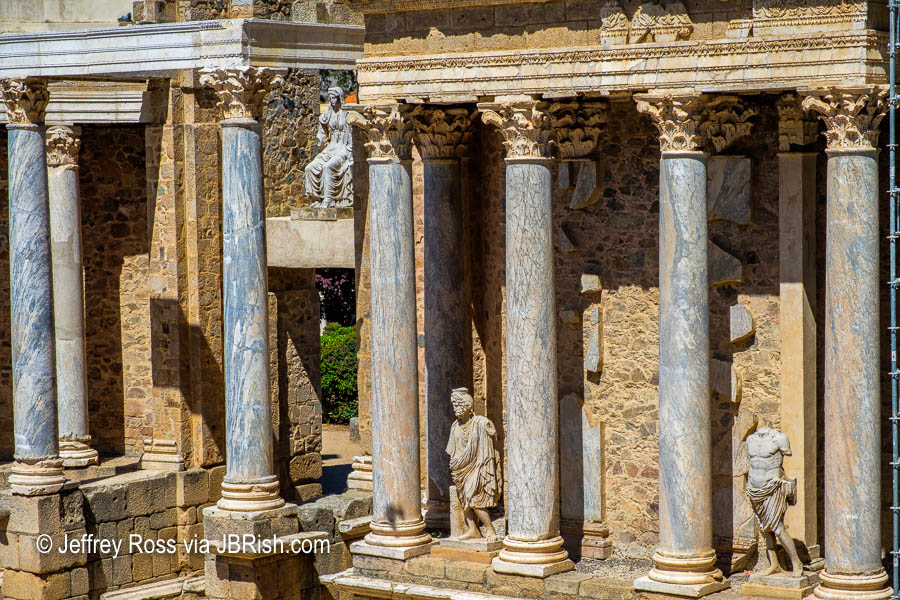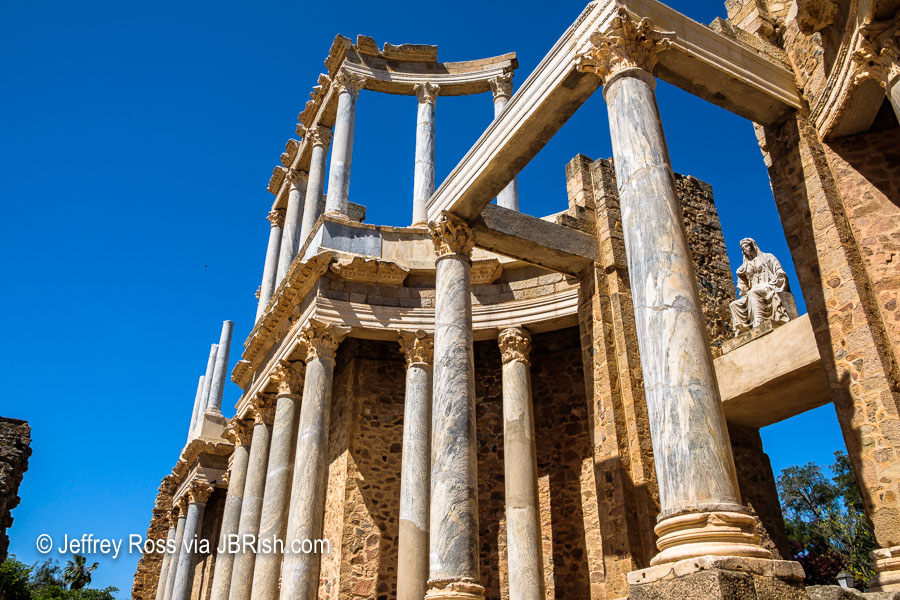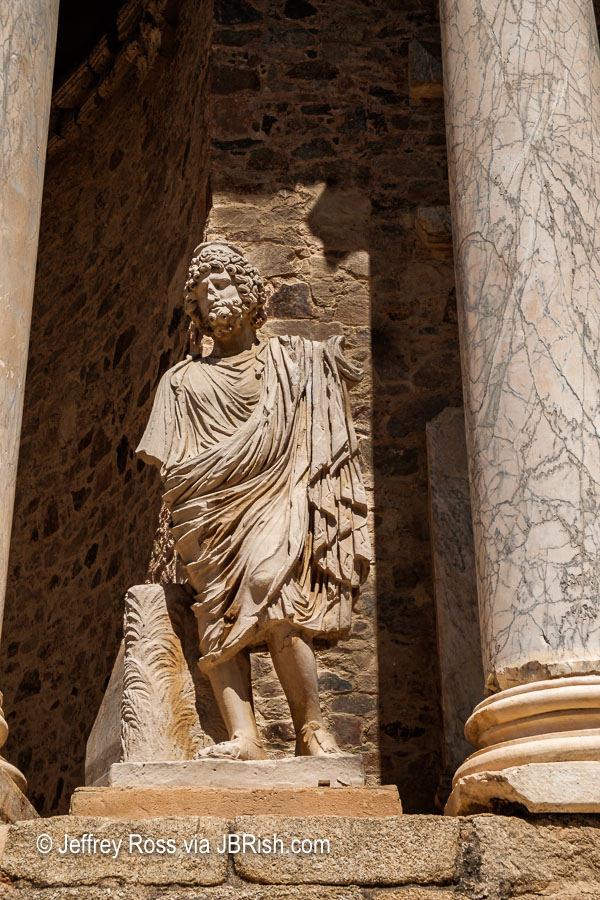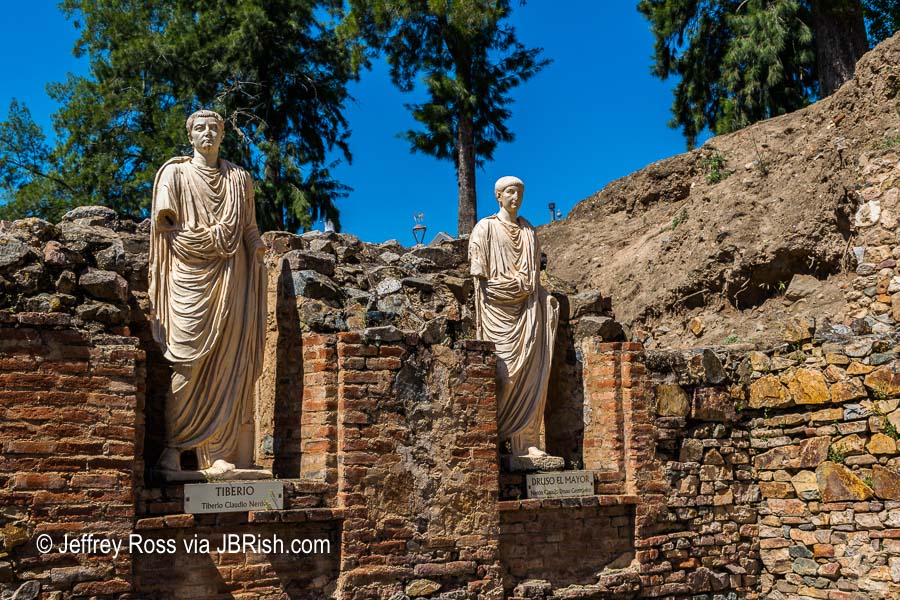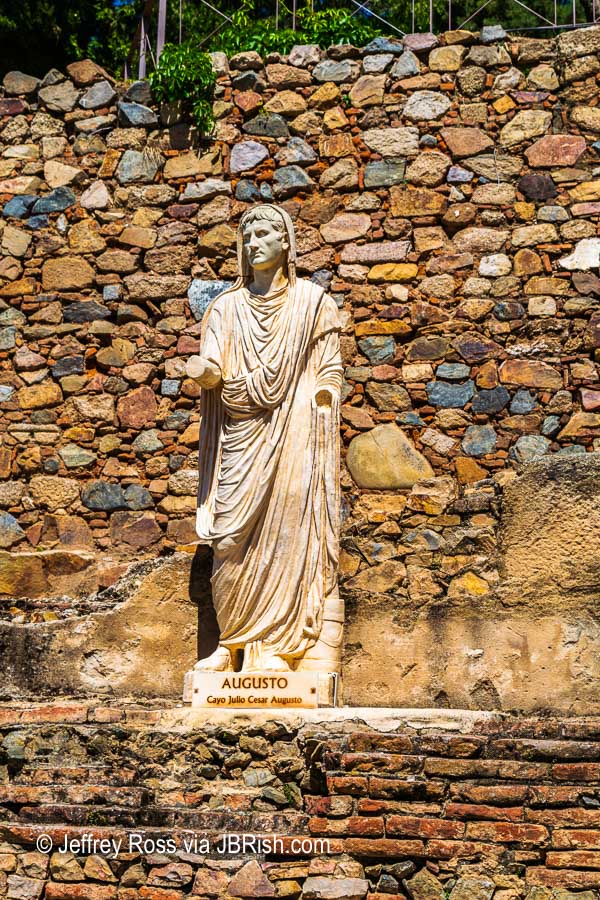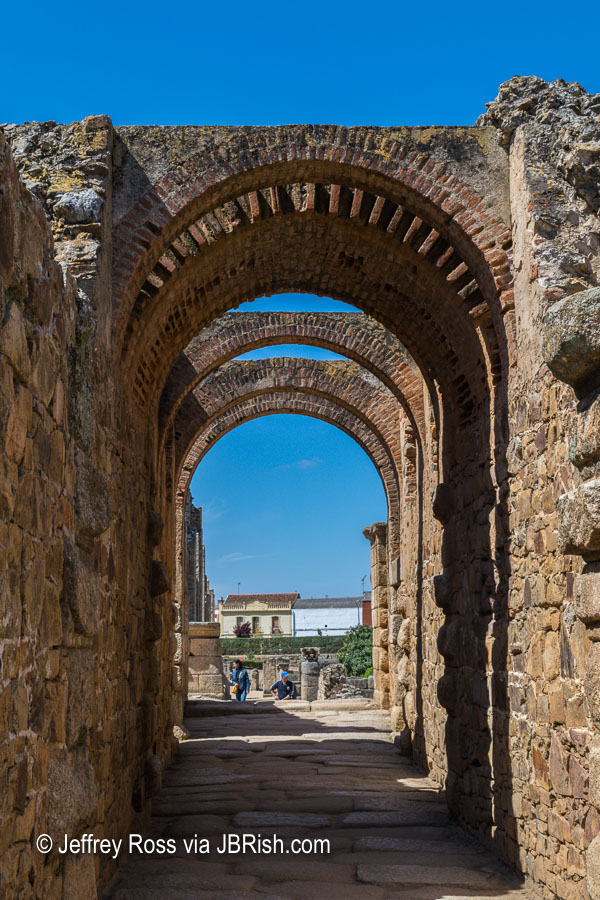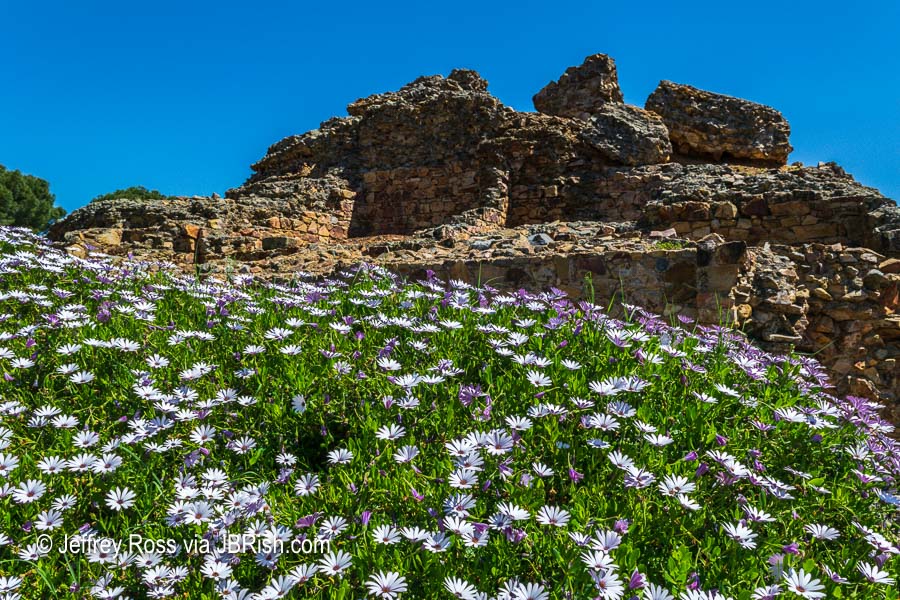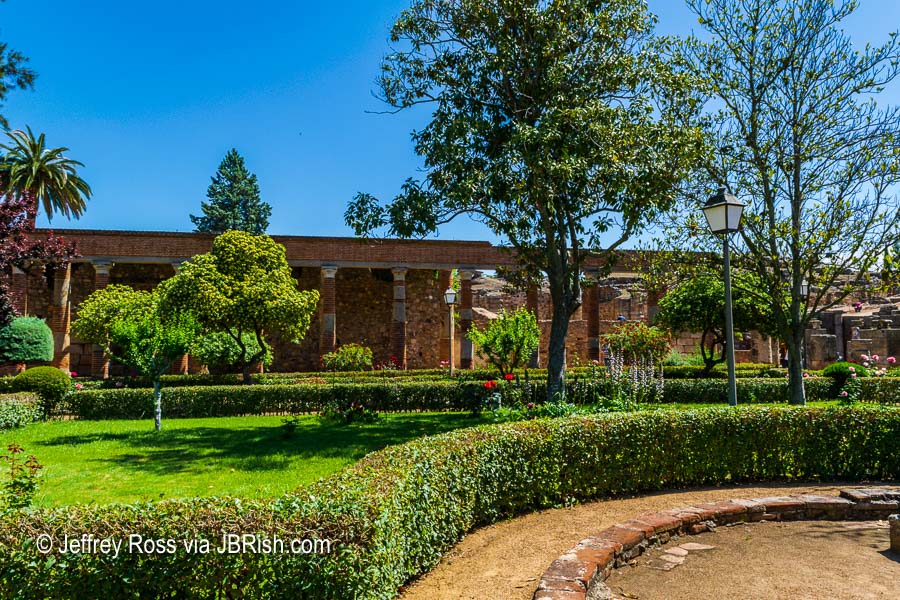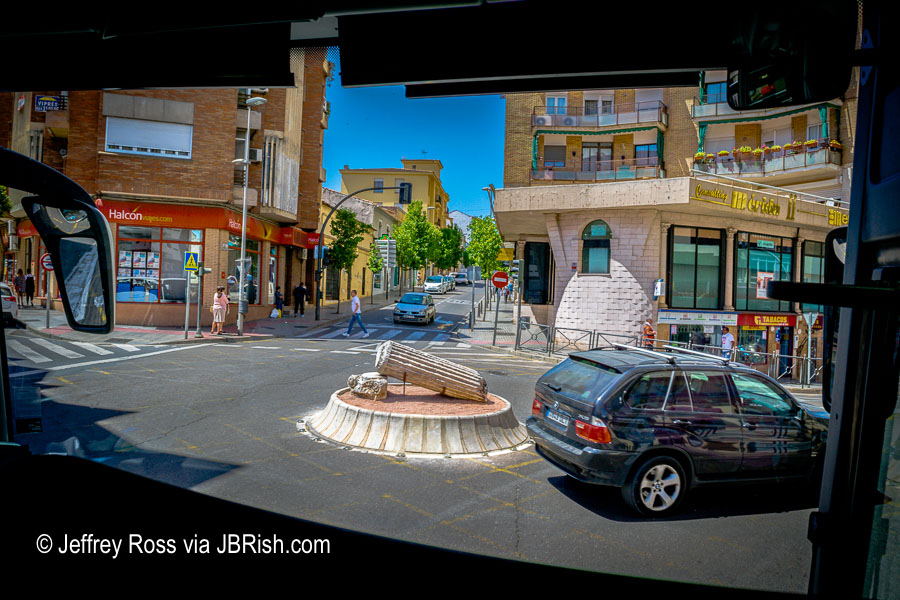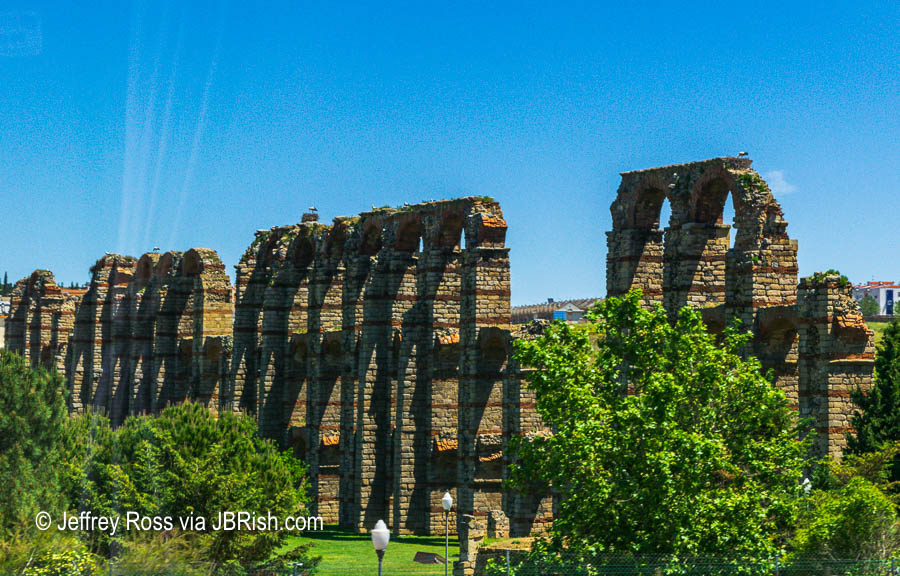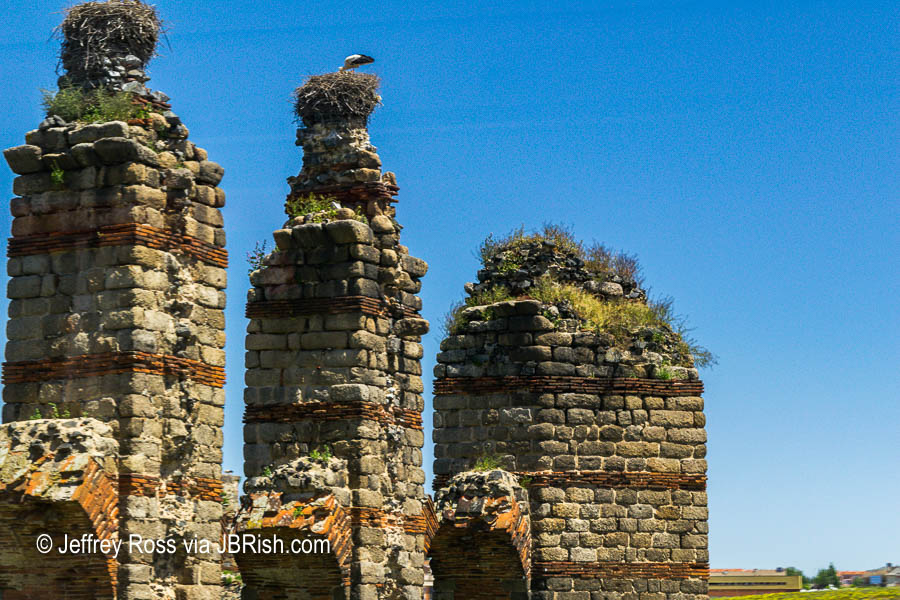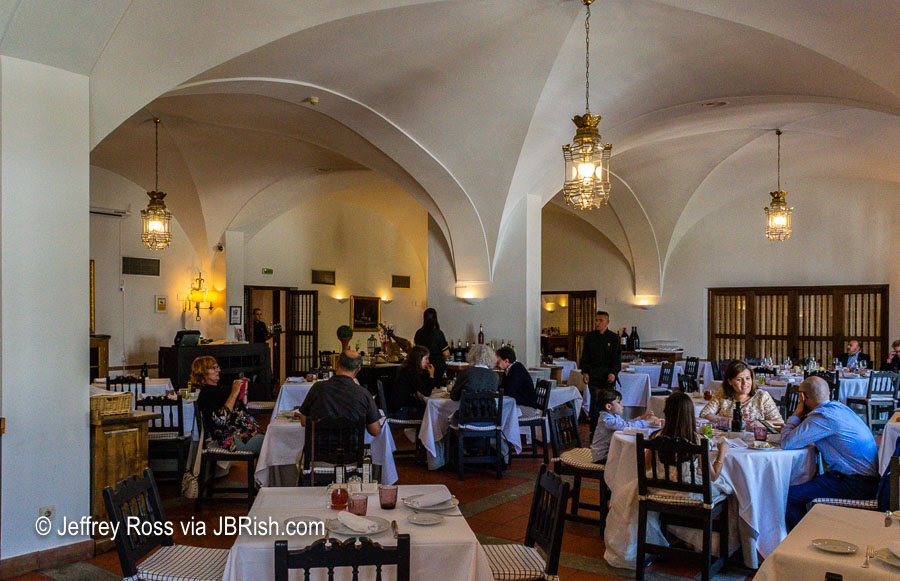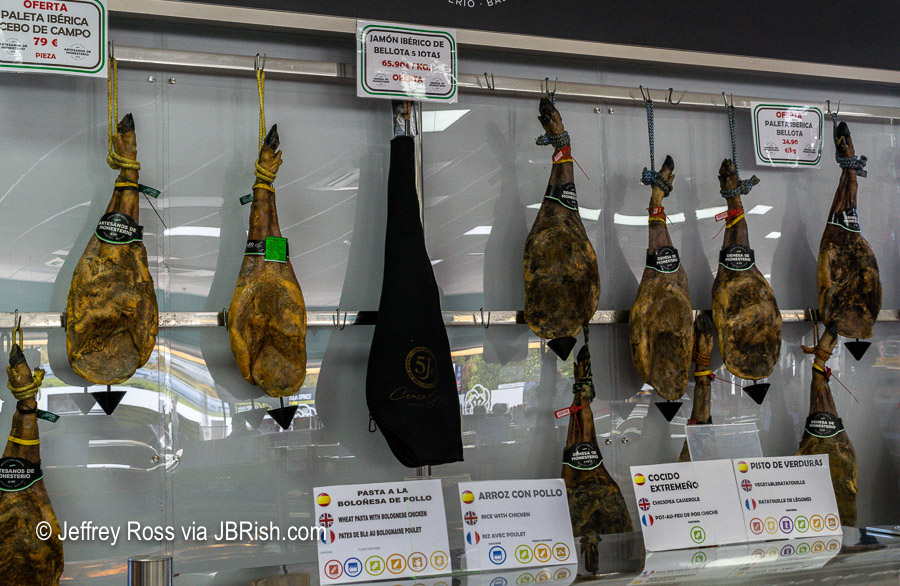When we embarked on our excursions around Seville and upon our return, we marveled at the beauty and the elegance of the Alfonso XIII hotel. Who wouldn’t appreciate the accoutrements such as this love seat and window view near the elevator?
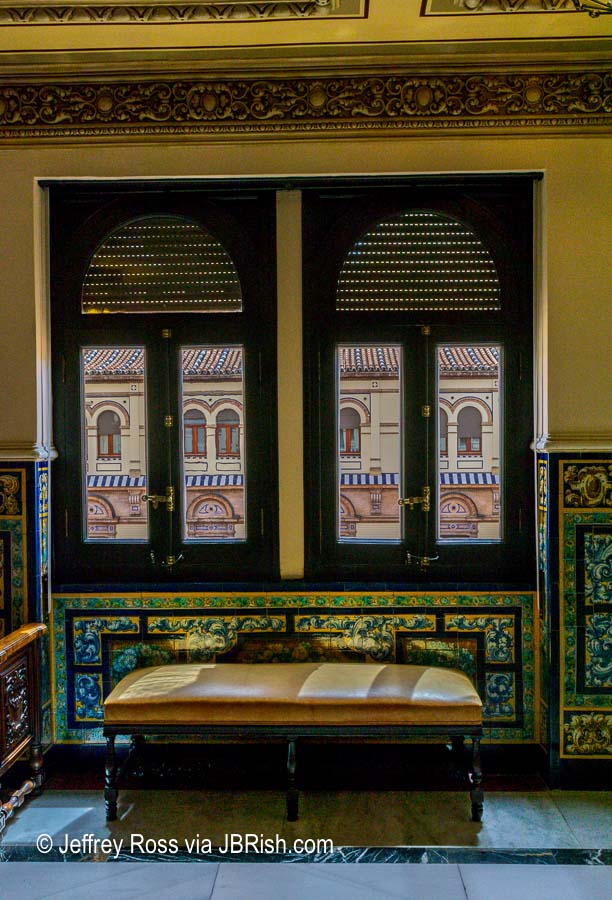
One day upon our return to the hotel, there was a throng waiting outside. We couldn’t imagine what was happening. The group was mainly young and they had books, placards, etc. with them. Curious, I asked one of the people waiting what the excitement was and learned that the cast from the Game of Thrones was at the hotel. As mentioned in an earlier post, some of the filming is done in Seville.

Along the canal close to the hotel, one can visit the Torre del Oro or Golden Tower (13th century), a medieval Arabic military dodecagonal (12-sided) watchtower.
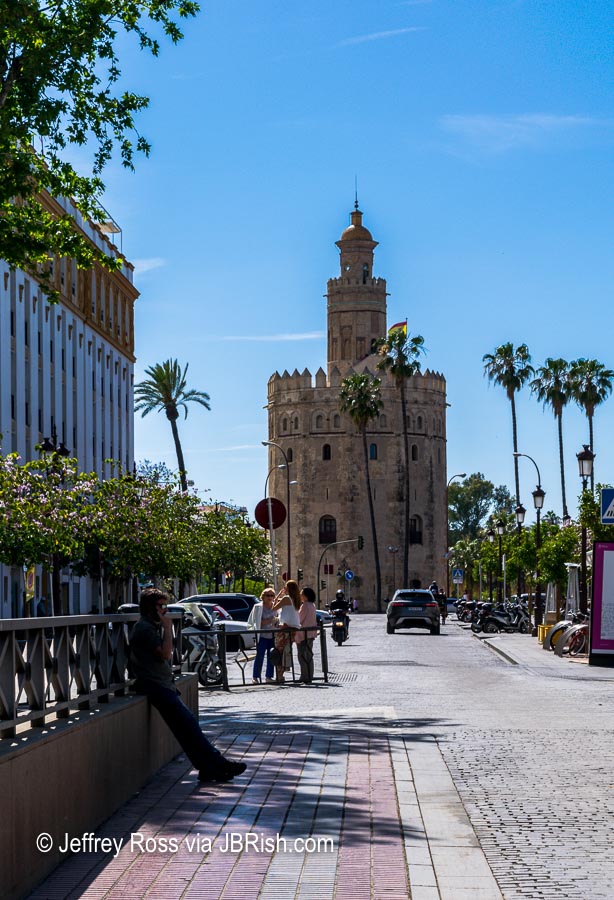
We found beauty in many of the less touted buildings and locales in the city. I was not able to identify this structure, but the color of the building and the tiled squares were very pretty.
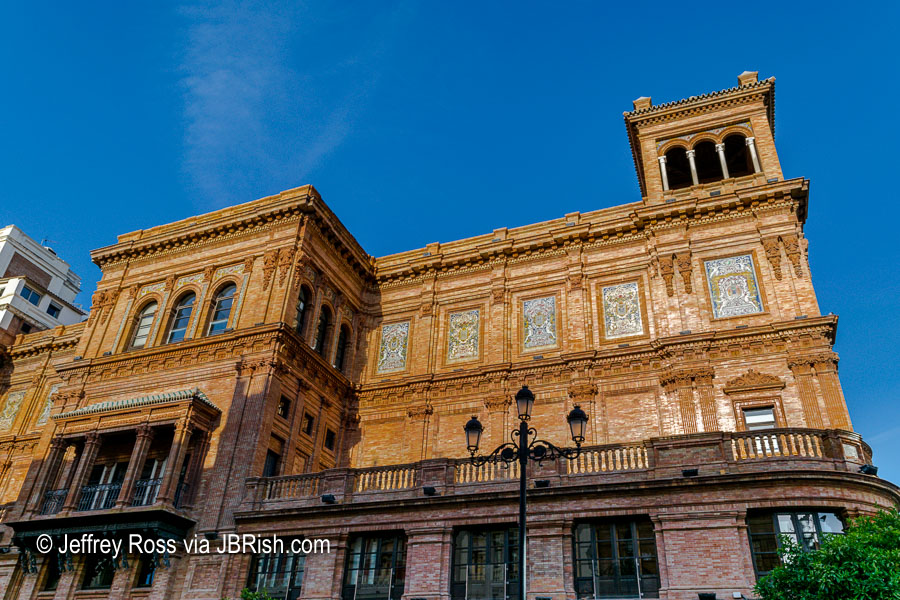
The nearby Palacio de San Telmo (below), once a seminary, a royal palace and maritime academy is reportedly one of the most beautiful buildings in Seville and now serves as the official residence of the President of Andalusia.
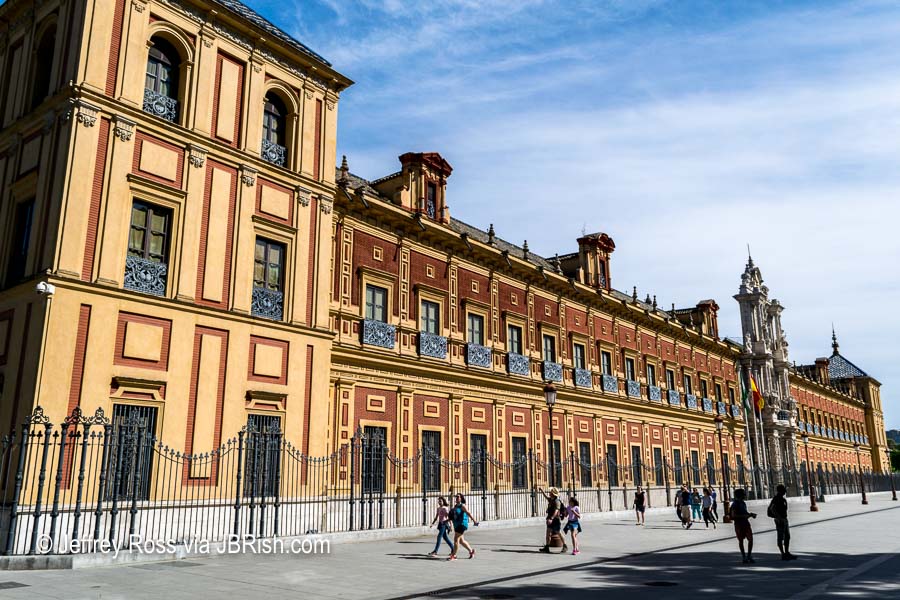
Equally enjoyable and much appreciated are those houses and buildings along the small, less formal side streets where one can find doorways like this.

Look at those carvings and colorful tiles framing the entranceway! The modern camera and card reader do not detract from the old-world visage this door portrays.
Every once in a while, visitors can look up and find beauty lurking in unusual places like the pattern created by the tiles on the roof of this church which lead the eye to the ornate top.
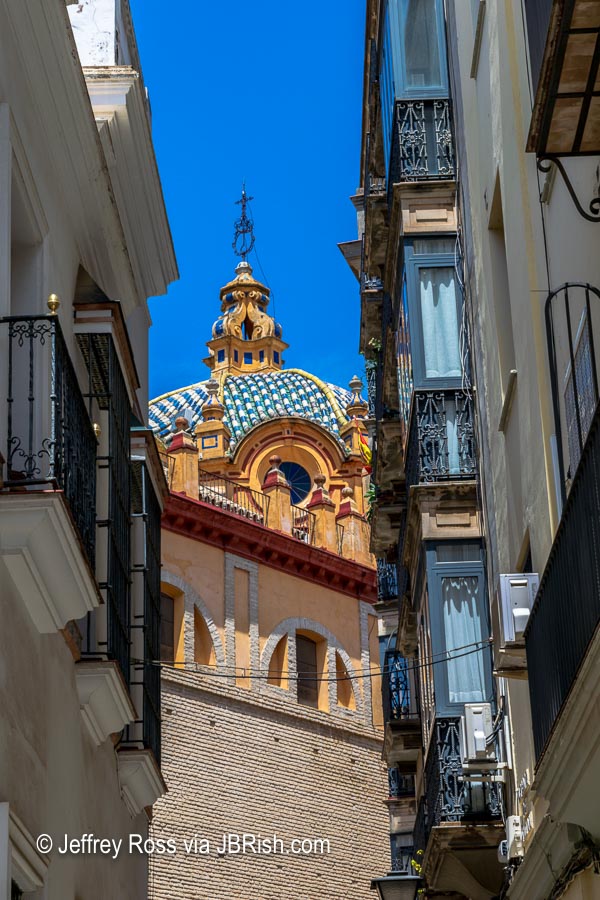
Just a short distance along the same thoroughfare we noticed this niche carved into the side of an exterior wall with a statue of the Virgin Mary looking down at those passing by.
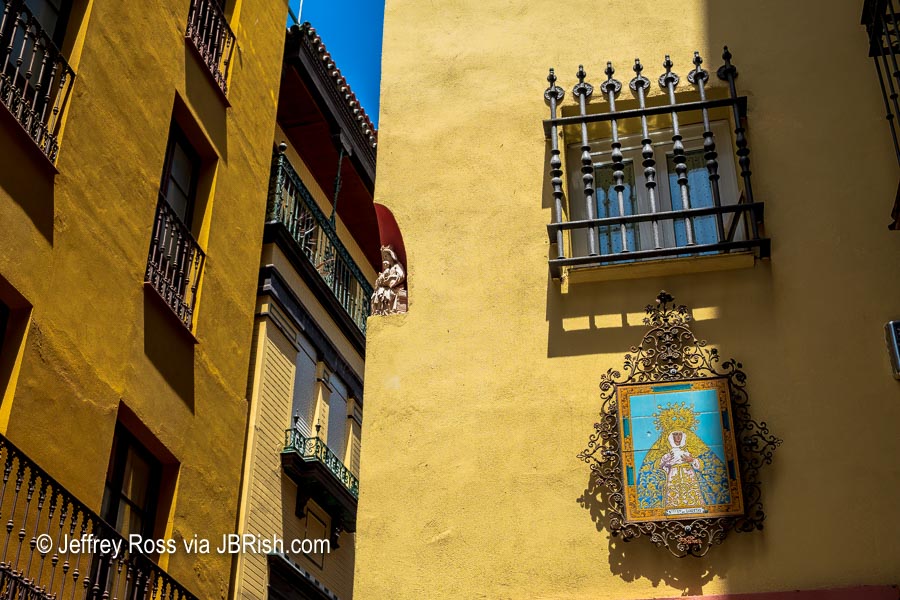
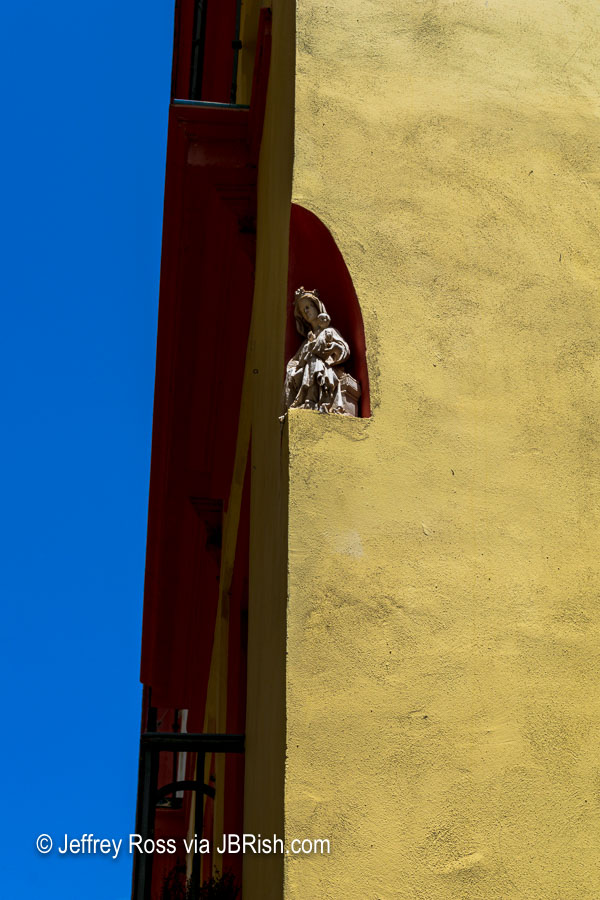
Even those buildings with a less elaborate appearance have striking, colorful personalities; roof-growing weeds and all!
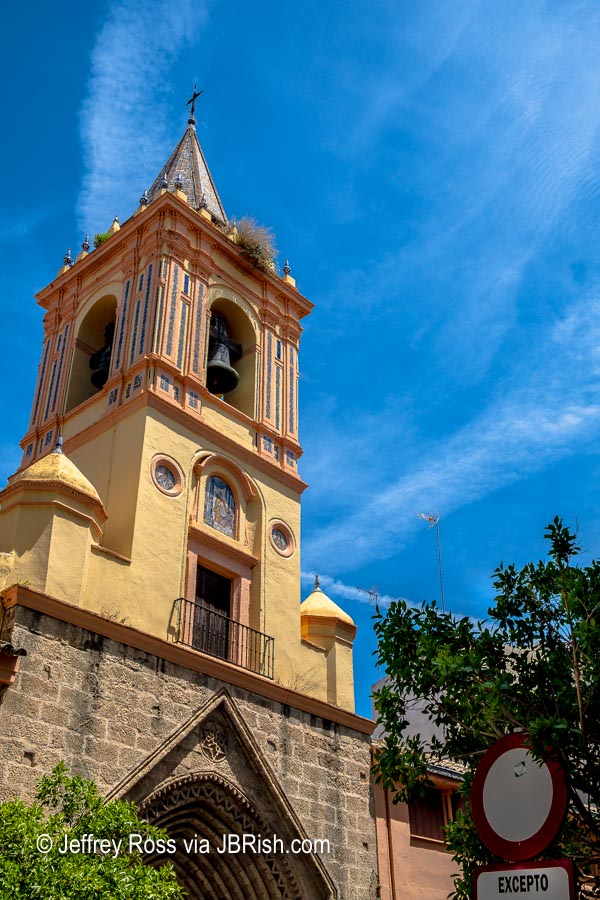
We were not shy about walking into doorways to view the decorated courtyards. This was a stunning example.
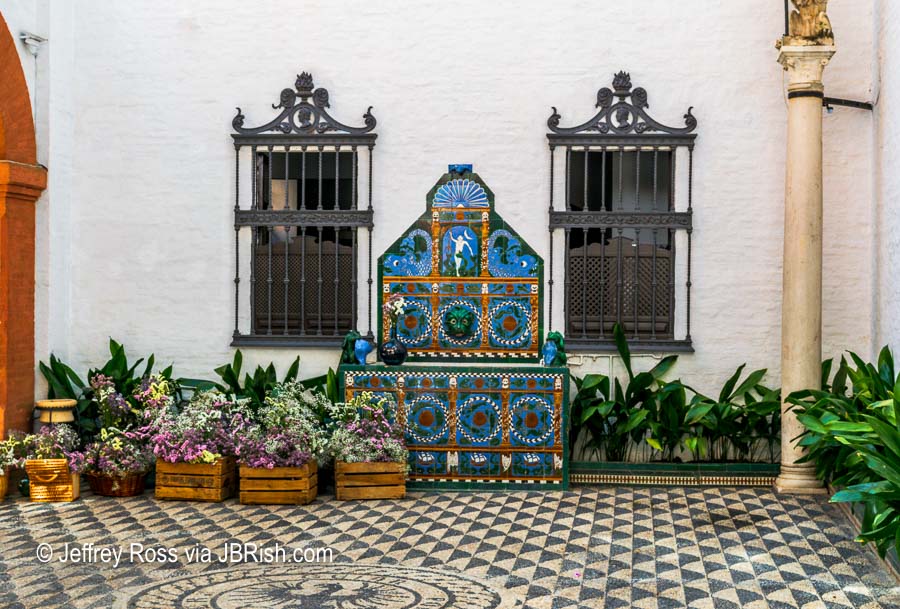
Like most major metropolitan areas, especially those appealing to tourists, one encounters street performers. This unique trio consisted of two dummy-heads and one real person. At times a pedestrian would pass close by and the middle head would pop up making a sound and scare the person approaching. Funny for onlookers, but perhaps not so funny for those being pranked. The customary “tip jar” is just outside the frame.
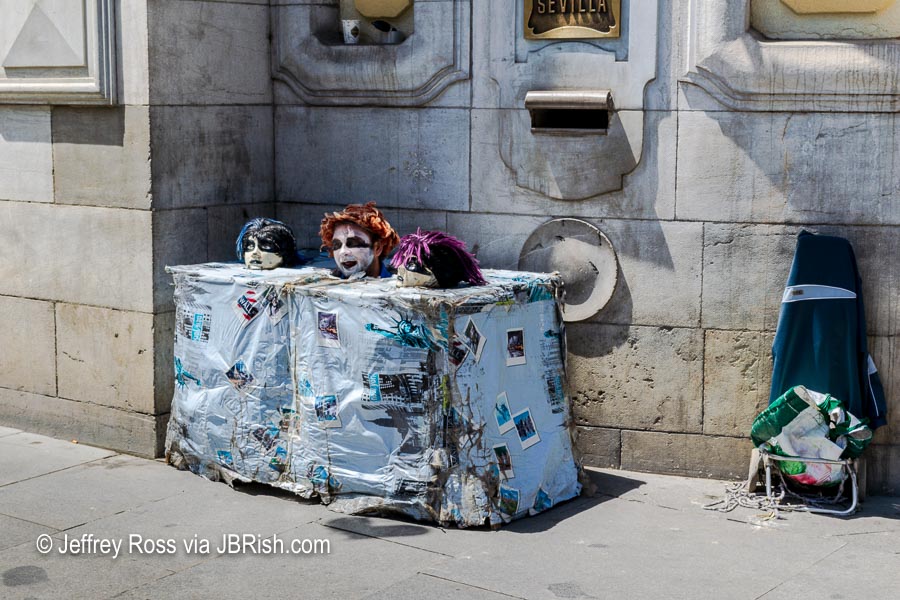
Seville has a more modern visage that we did not explore to the fullest. On our way out of town, we saw markers along the streets denoting bicycle lanes.
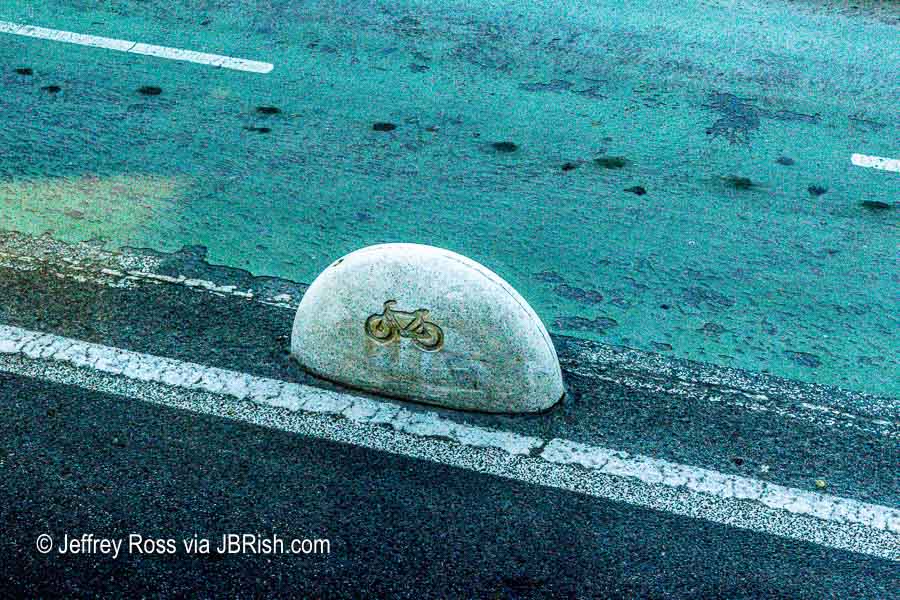
As we crossed the Alfonso XIII canal we saw a very modern structure in the distance located northwest of the aforementioned Golden Tower. It was the Reserve Hotel Eurostars Torre Sevilla. From what we could gather, it was somewhat controversial among the residents.
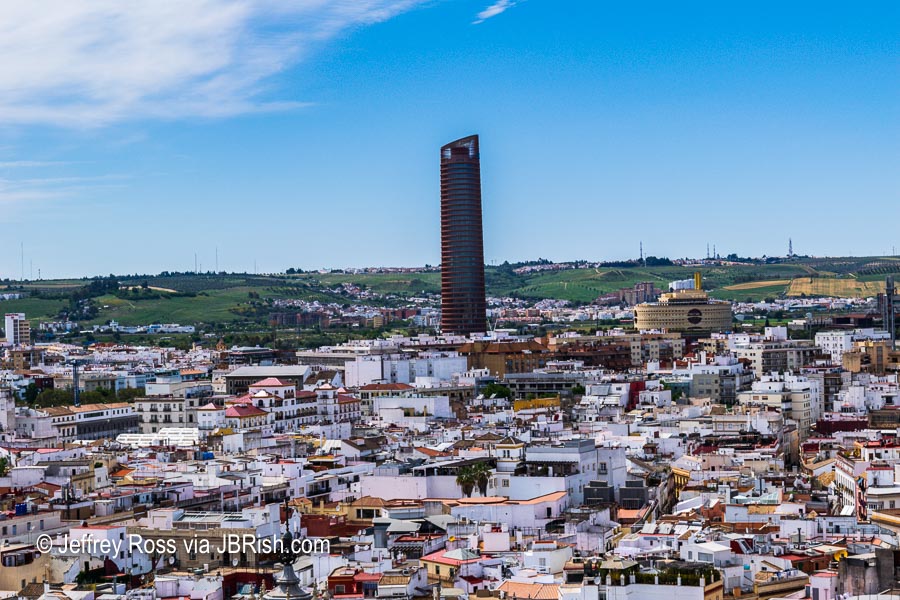
Here is the view from the bridge. Our last major sighting as we said goodbye to Sevilla.

Next we will be off to the races! Stay tuned.
**********
Read previous posts about our adventures traveling in Portugal and Spain:
Portugal – Alfama District, Lisbon Part 1
Portugal – Alfama District, Lisbon Part 2
Portugal – Lisbon Streets & Garden
Lisbon Portugal – The Belem and Tejo River District
Sintra Portugal – National Palace and Quaint Streets
Portugal – Seaside Resort of Cascais
Portugal – Lisbon’s Edward VII Park
Lisbon, Portugal – Walking the Avenue to the Rossio District
Lisbon, Portugal – Unique Gift Shop
Portugal – Evora’s Capela dos Ossos
Merida, Spain – Ancient Roman Ruins
Seville, Spain – First Impressions
Seville, Spain – Around Town (Sights along the streets)r
Seville, Spain – The Cathedral of Saint Mary
Read more Hiking and Exploration posts HERE
**********
All original content on this blog is copyrighted by Jeffrey B. Ross with ALL Rights Reserved. While reference links back to JBRish.com are appreciated and encouraged, please acquire approval for any reproduction of original content from this website.
©Jeffrey B. Ross 2014 – 2019 – JBRish.com
